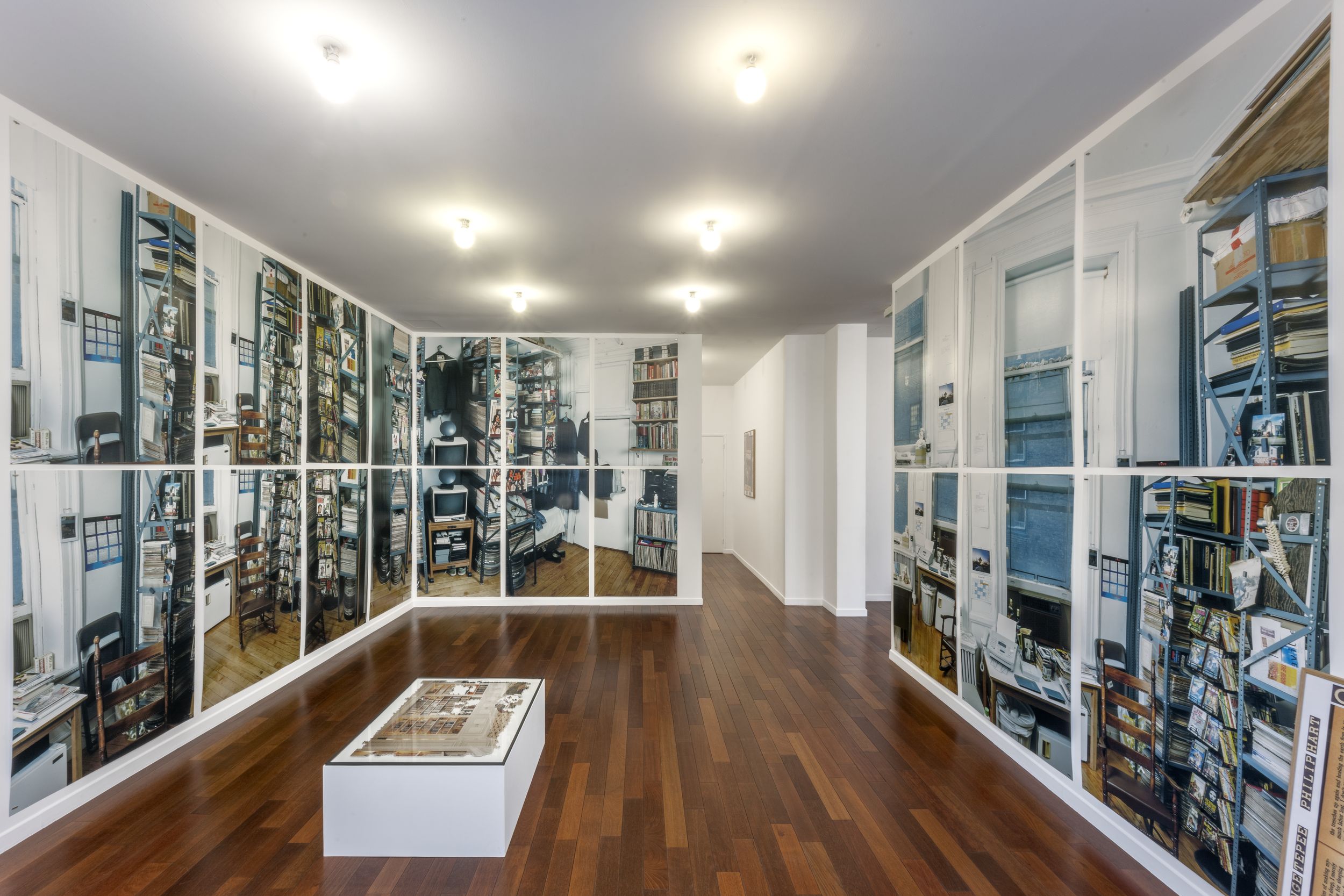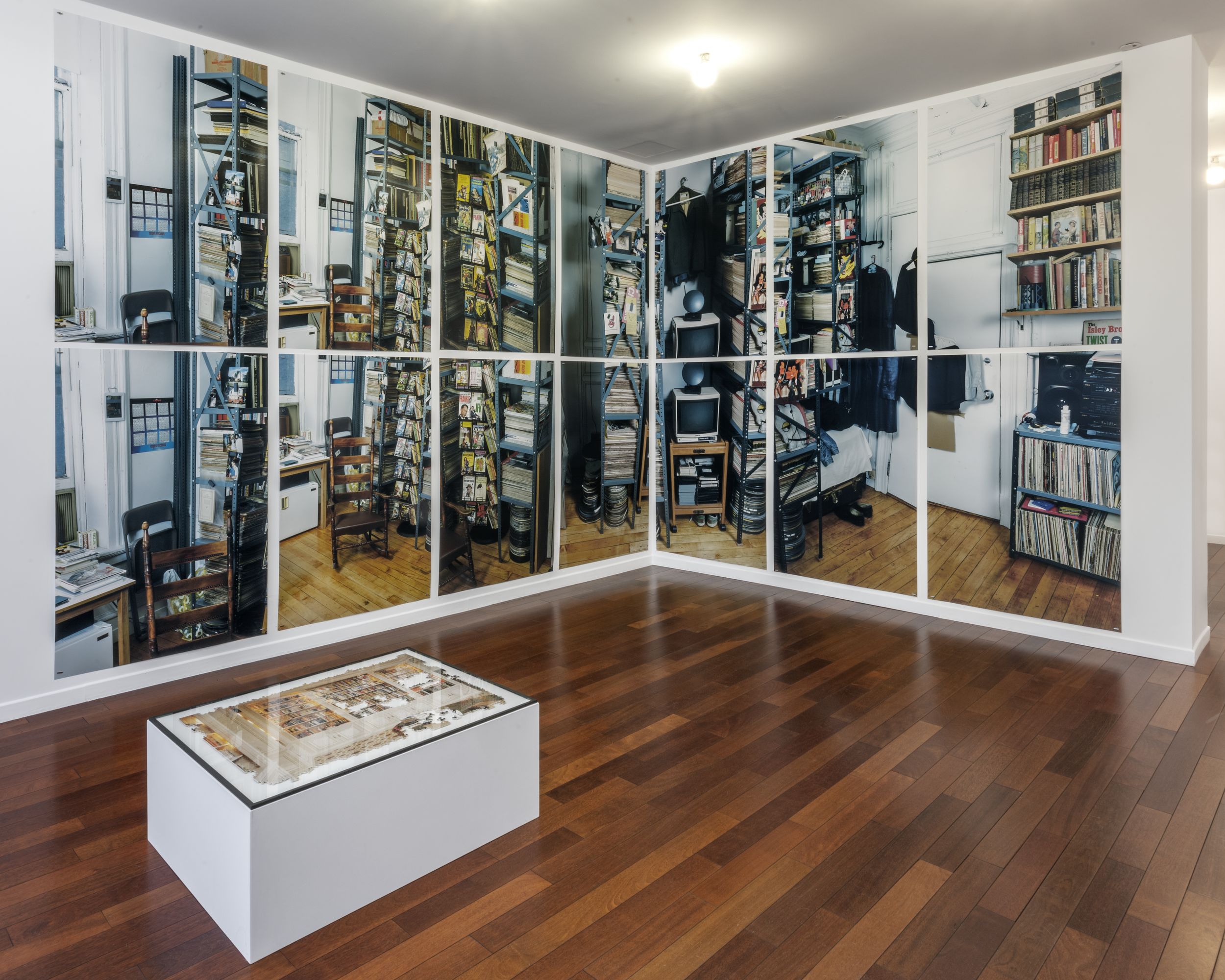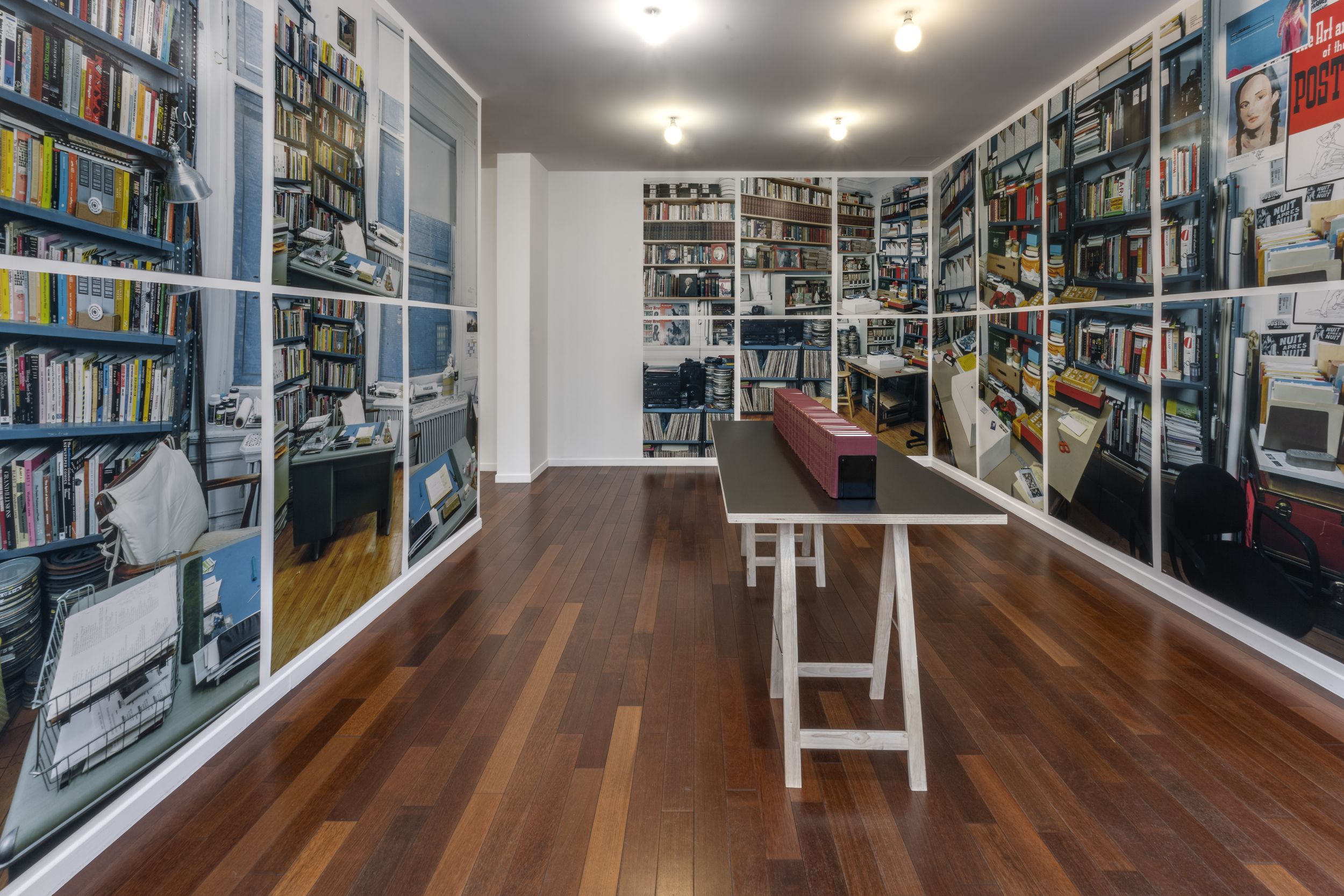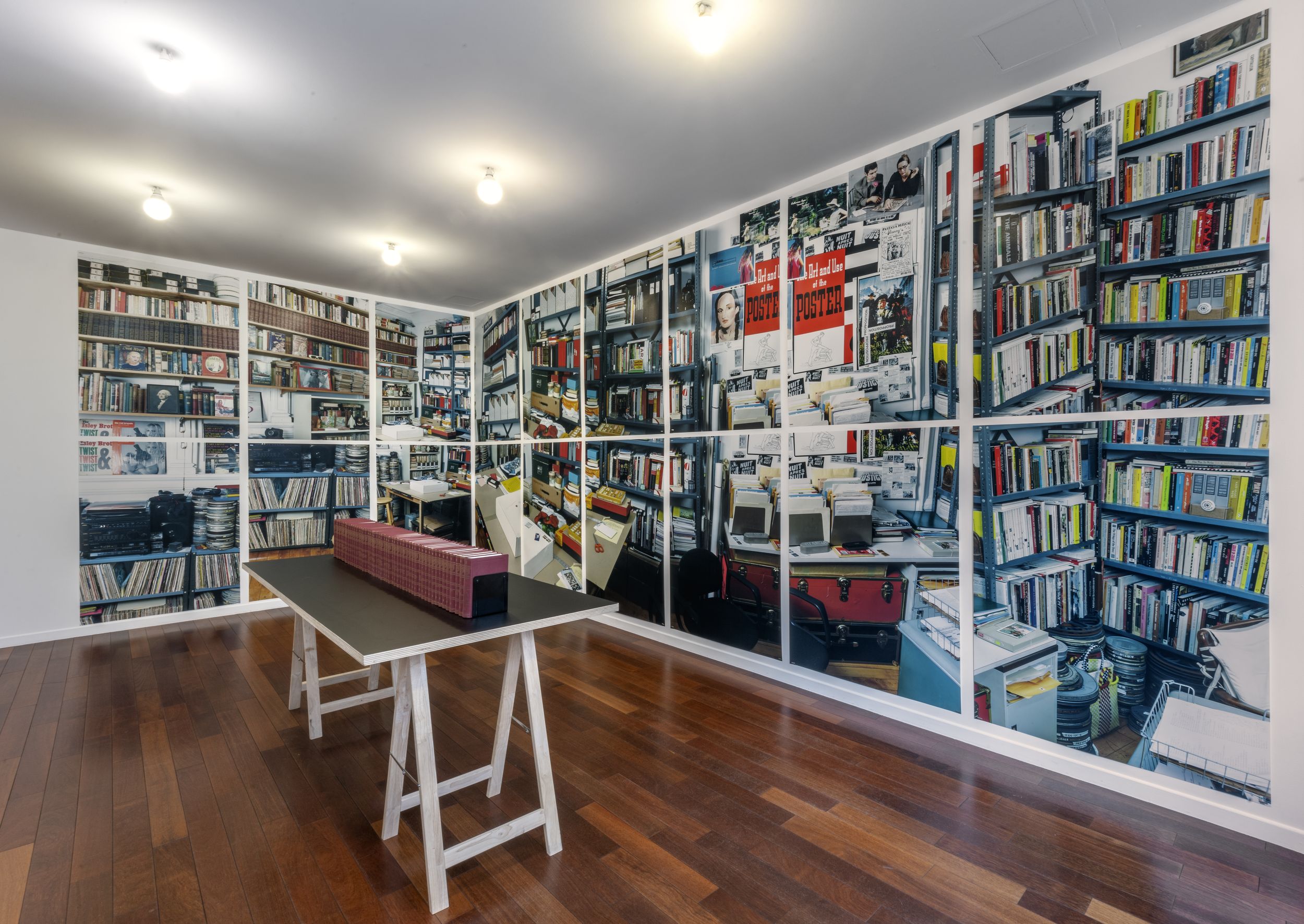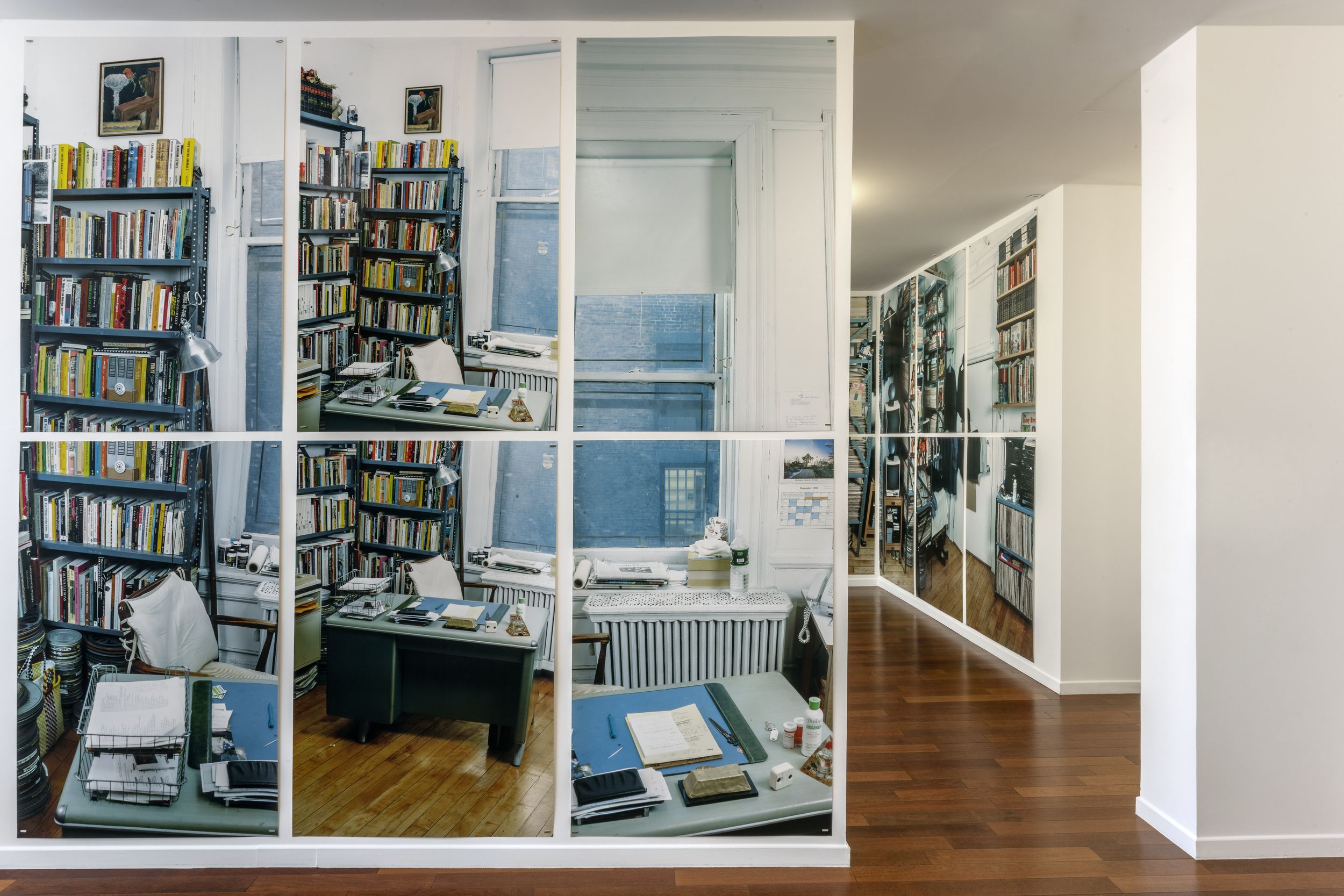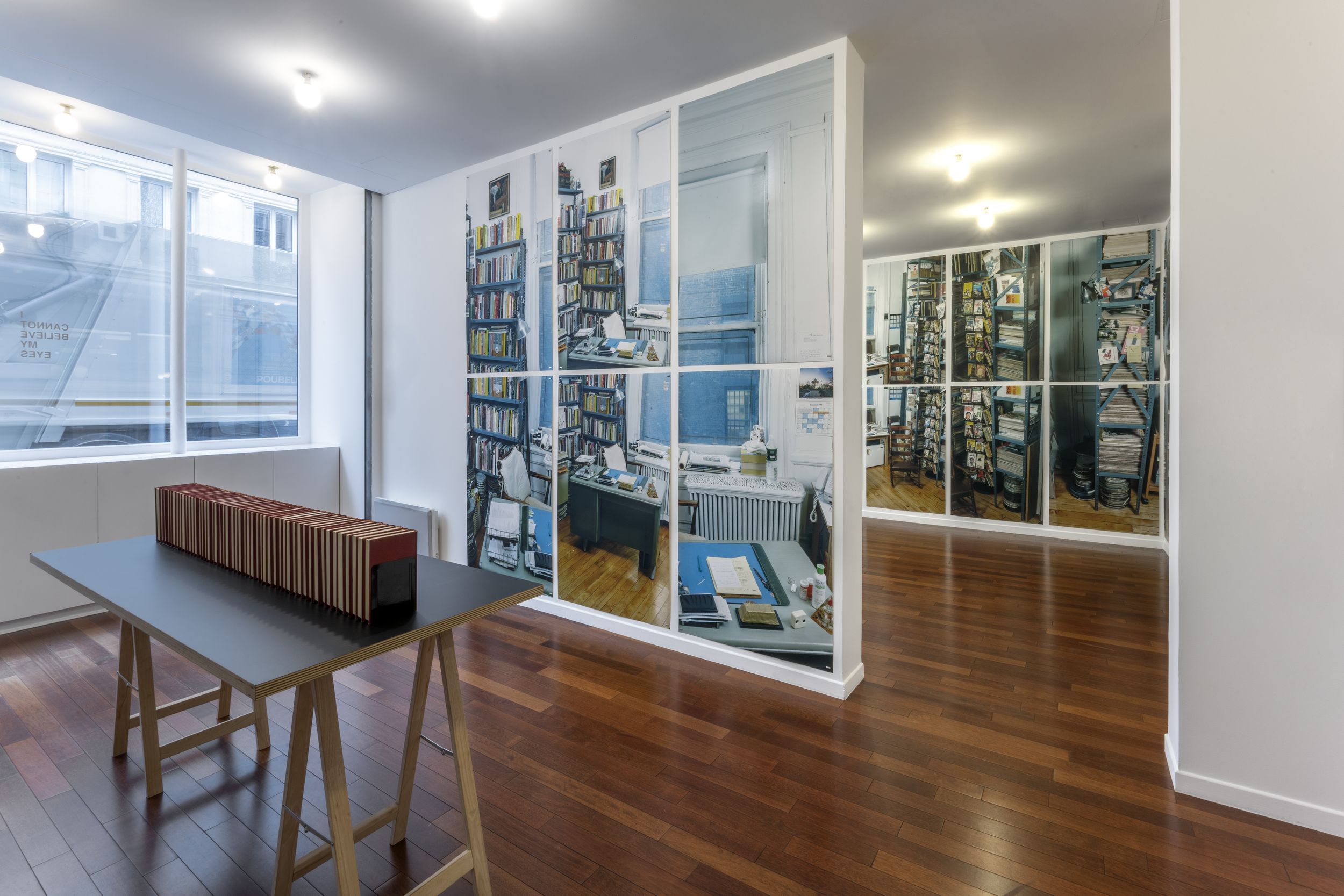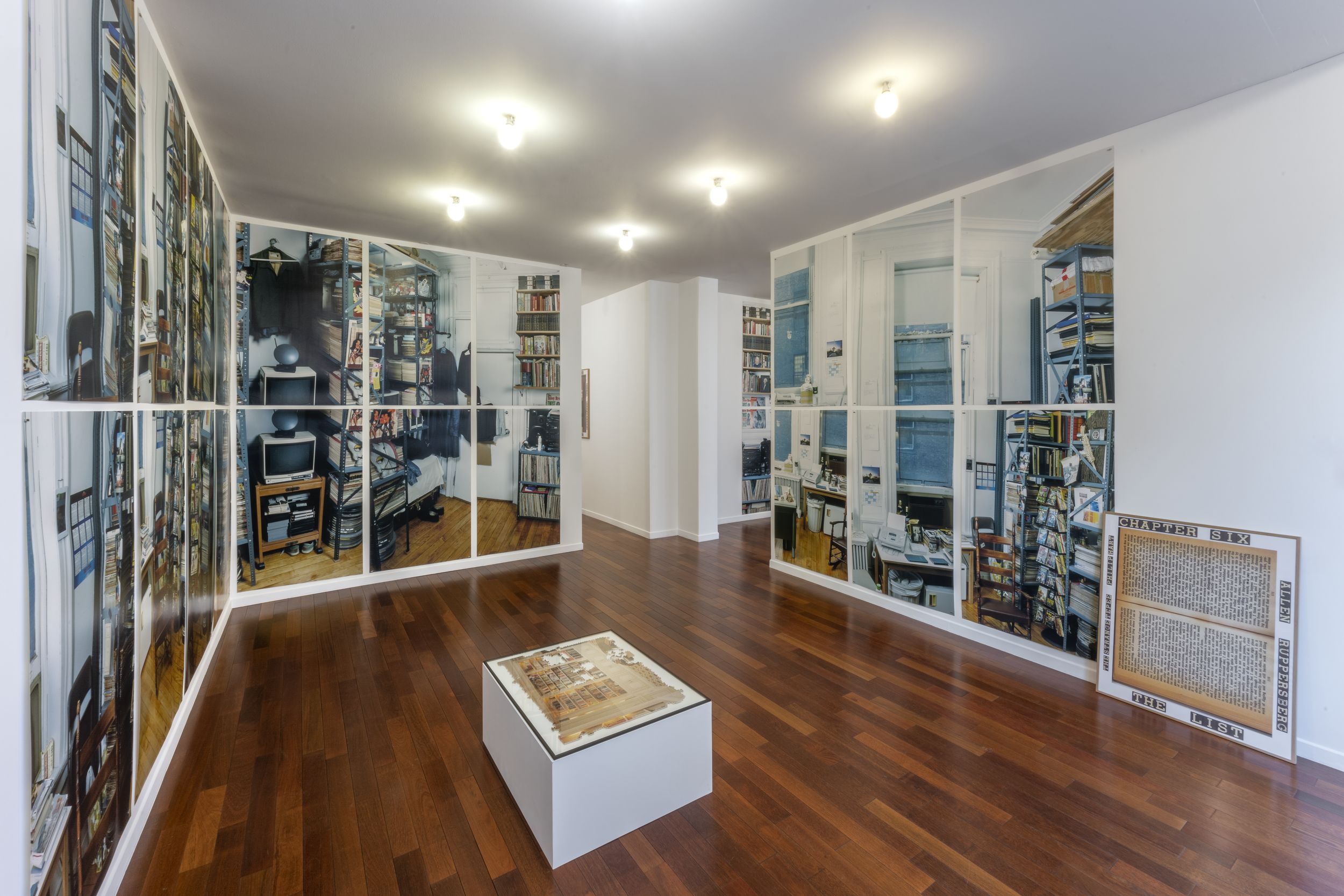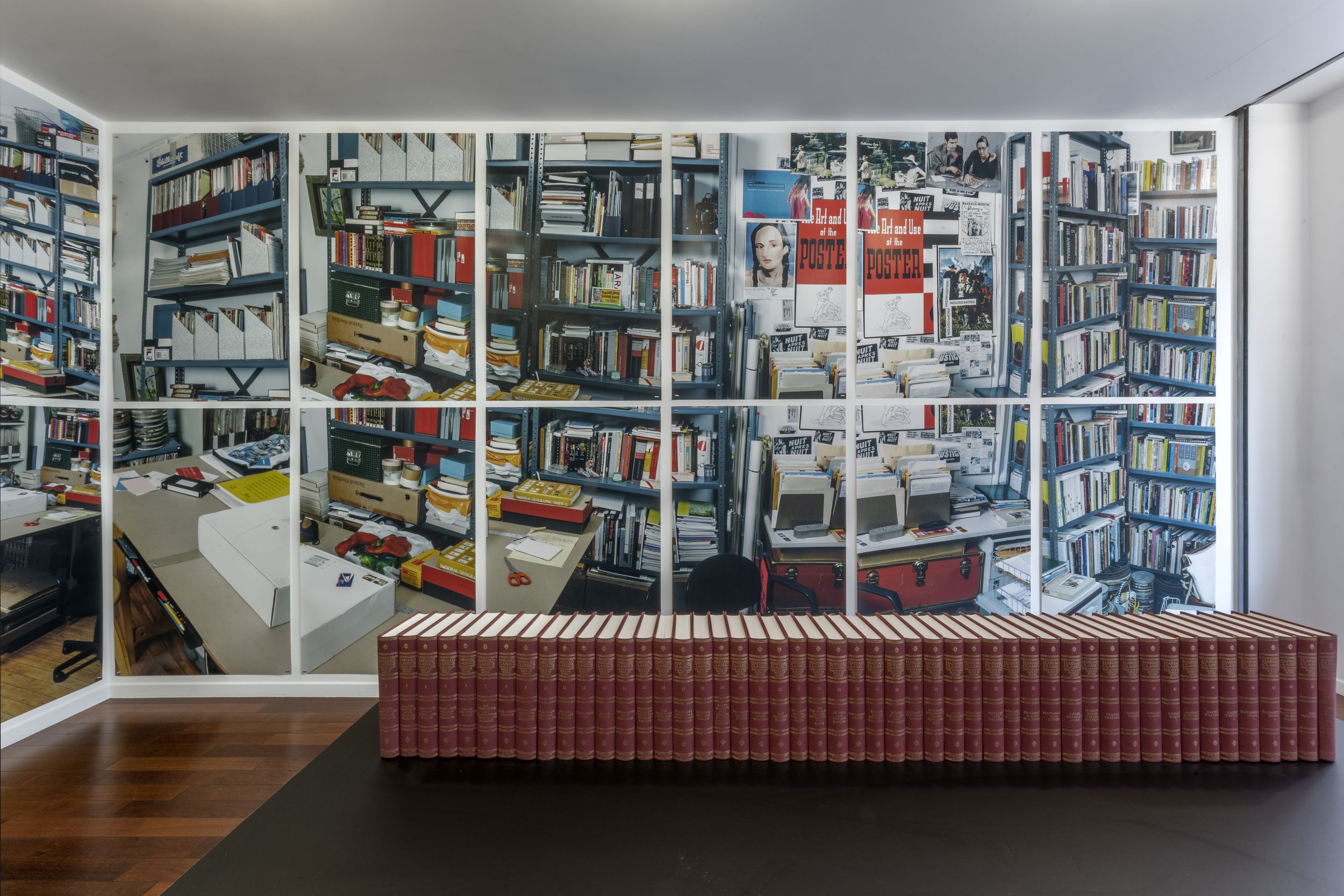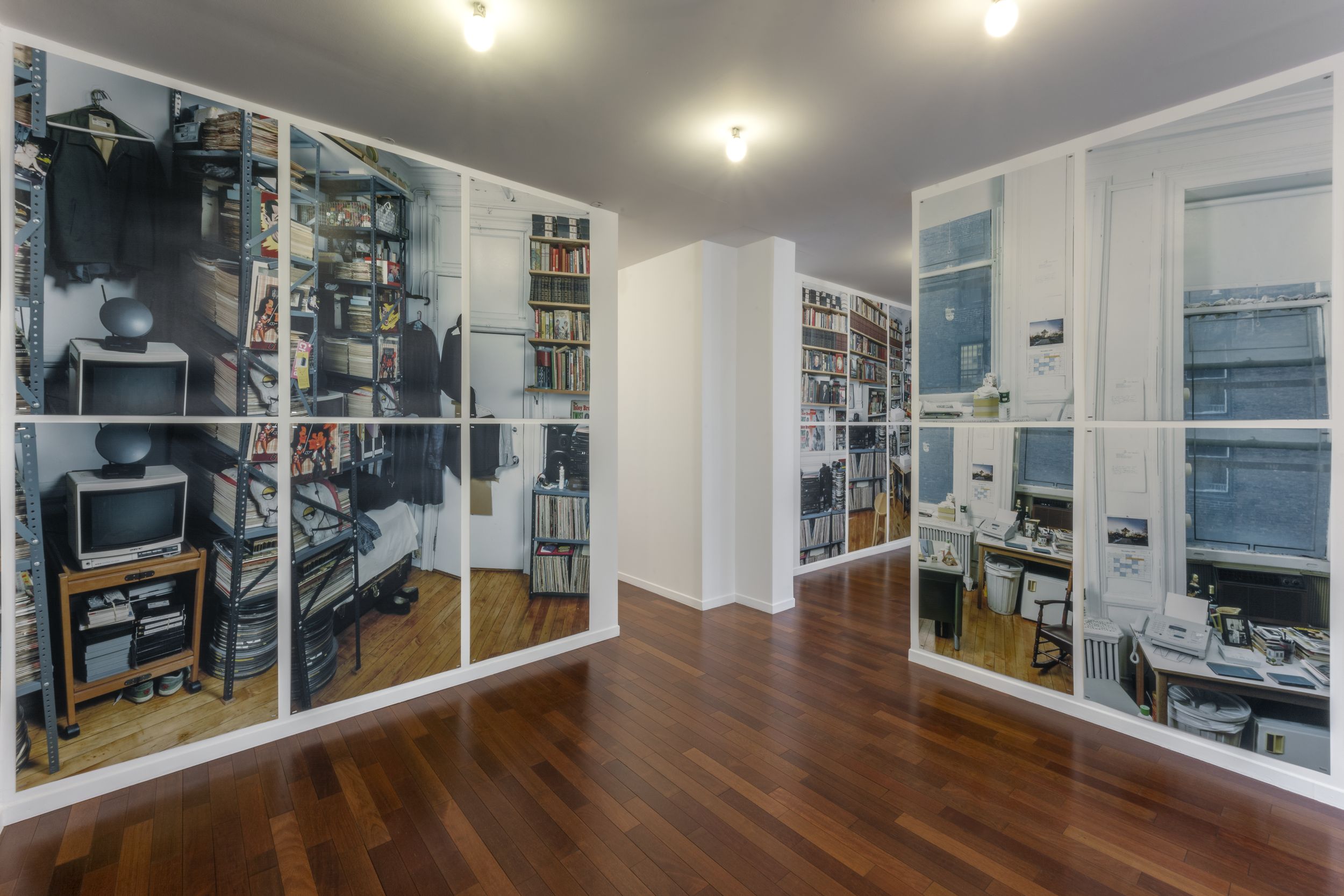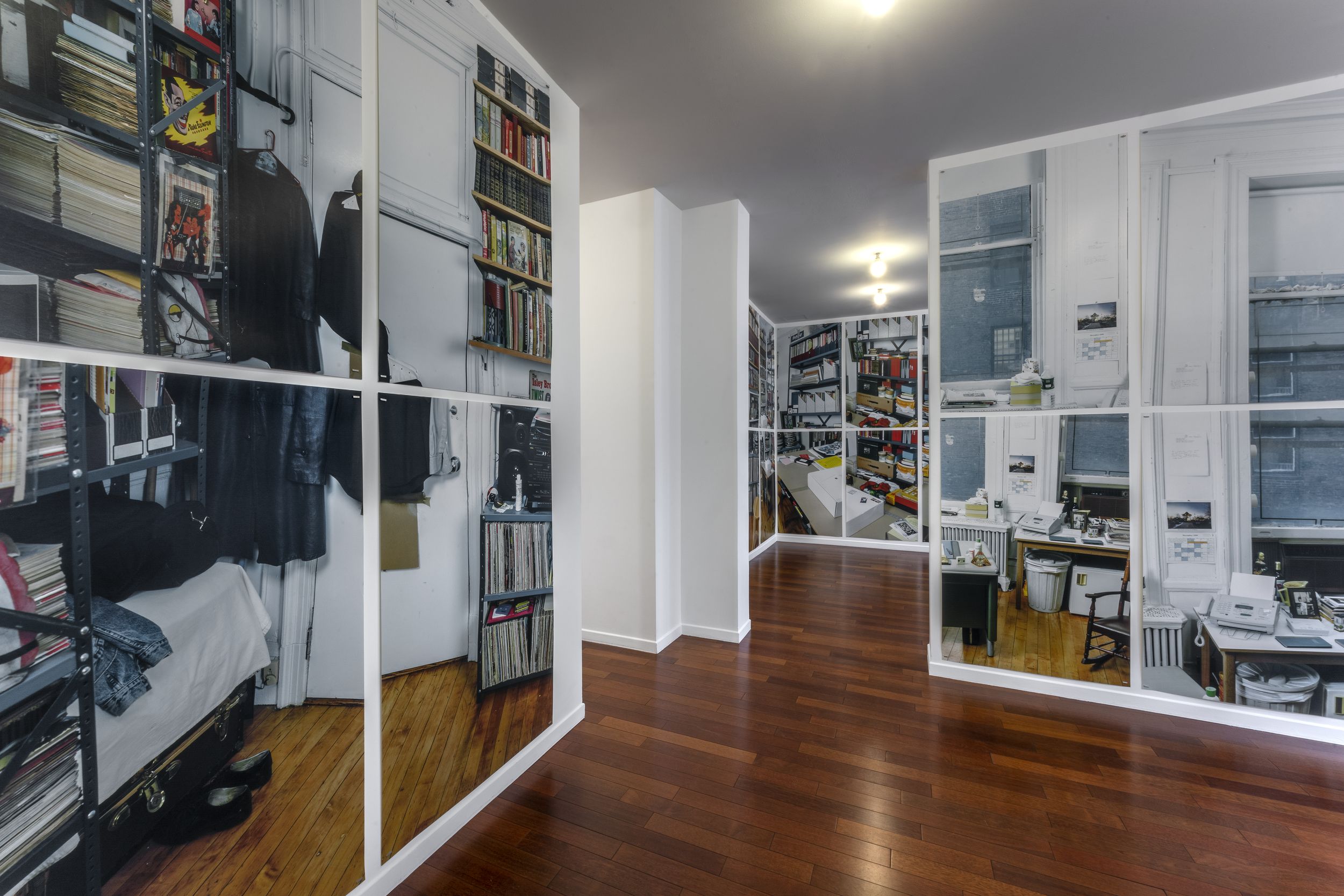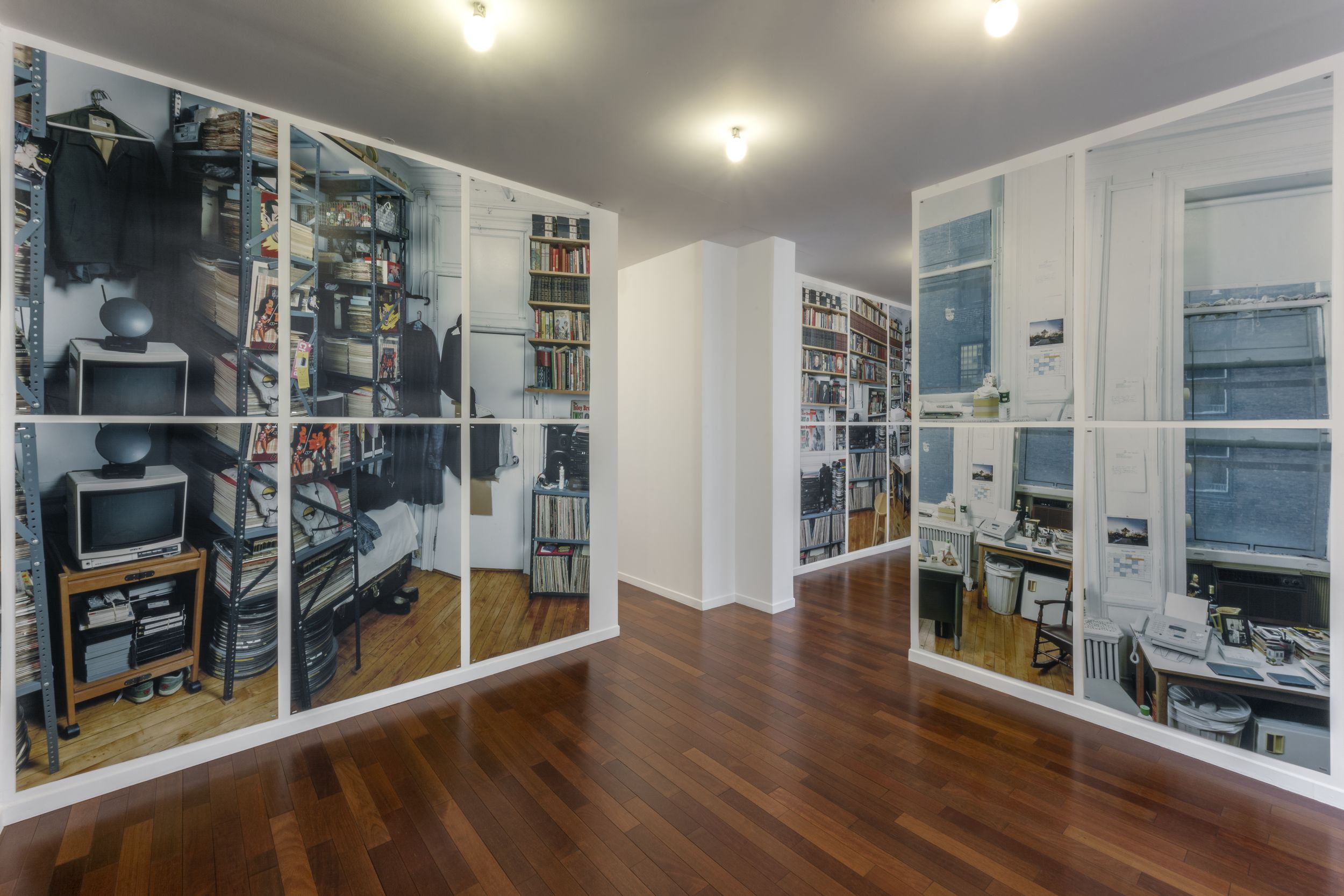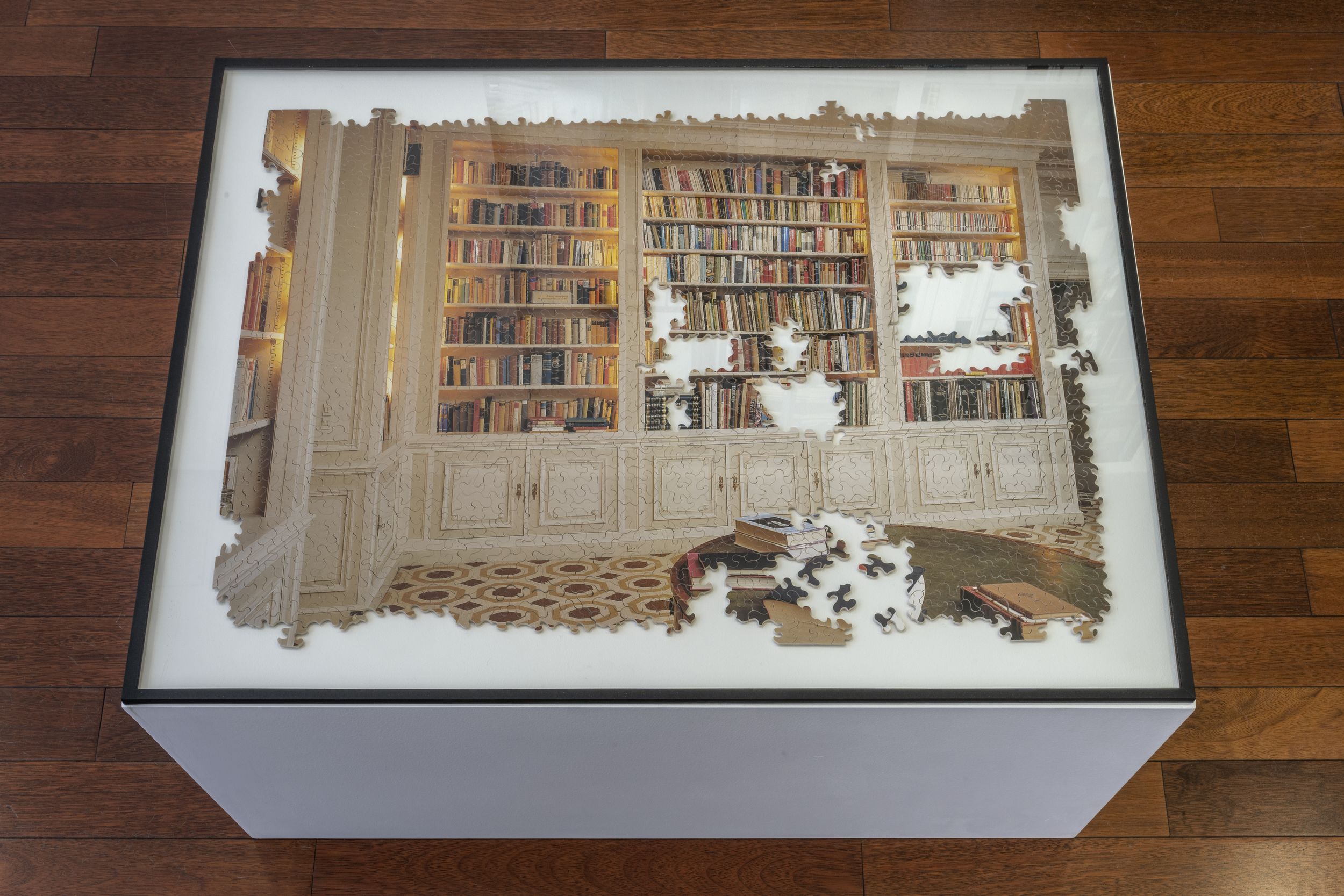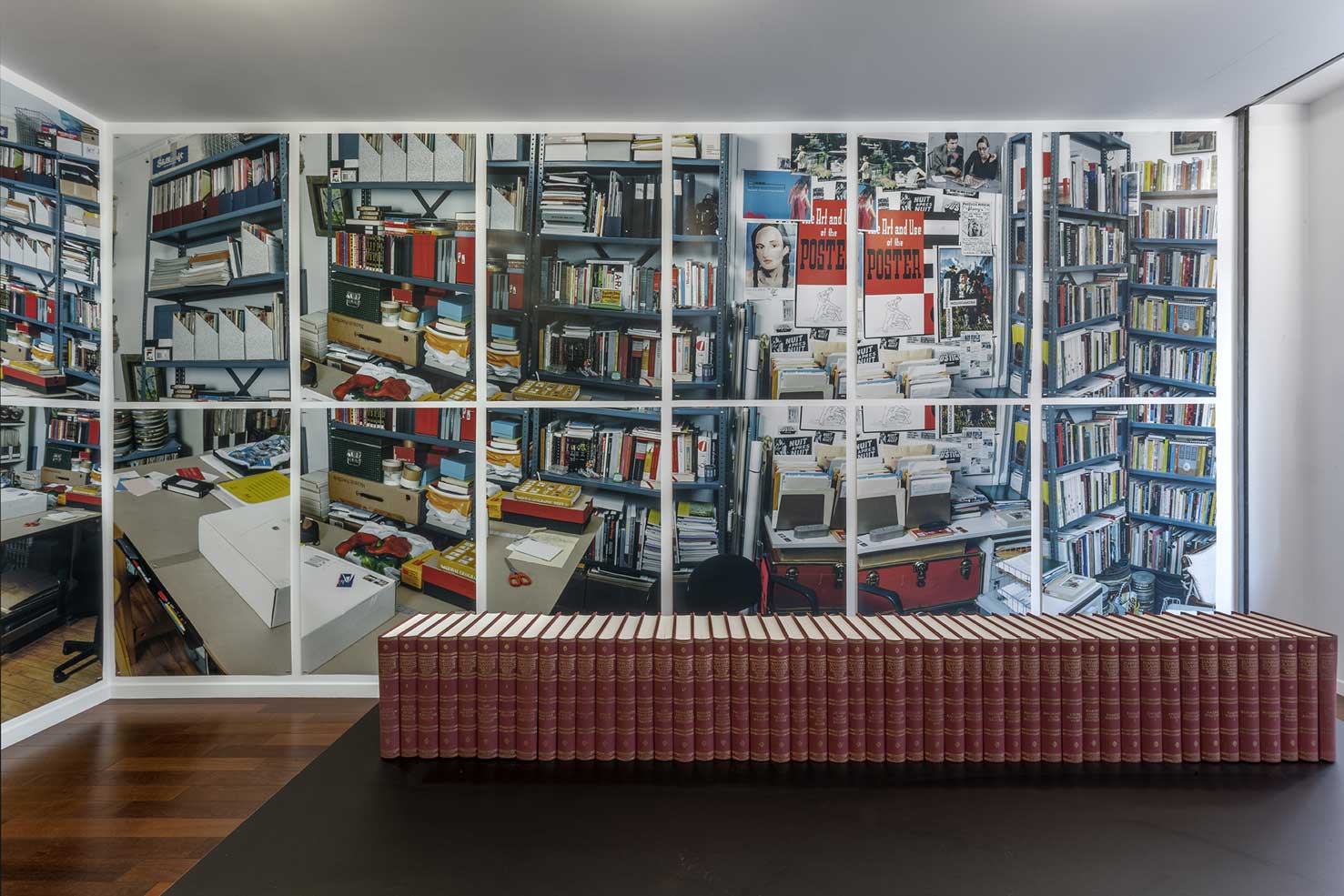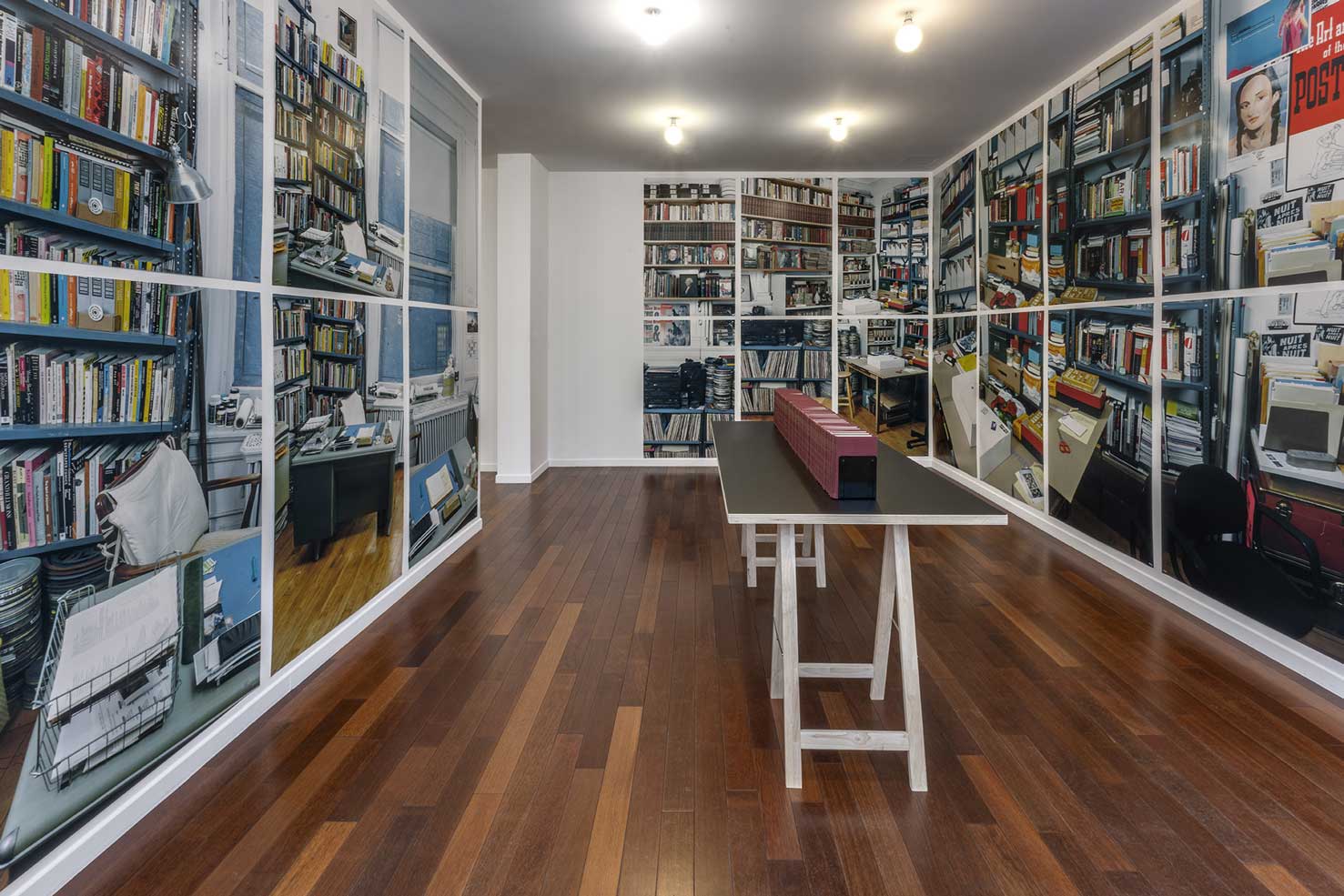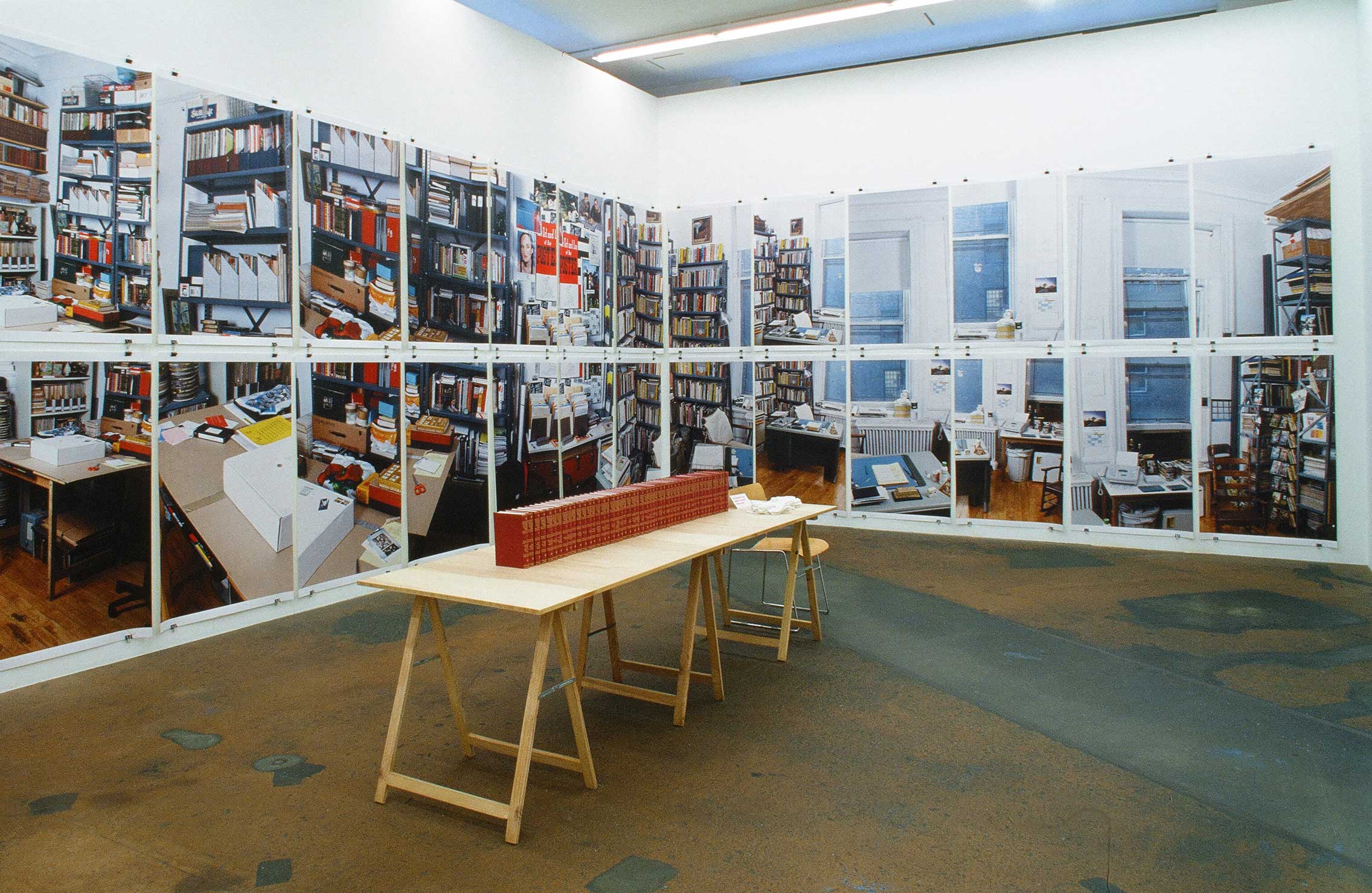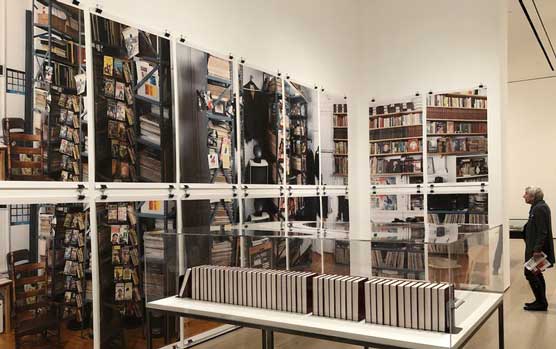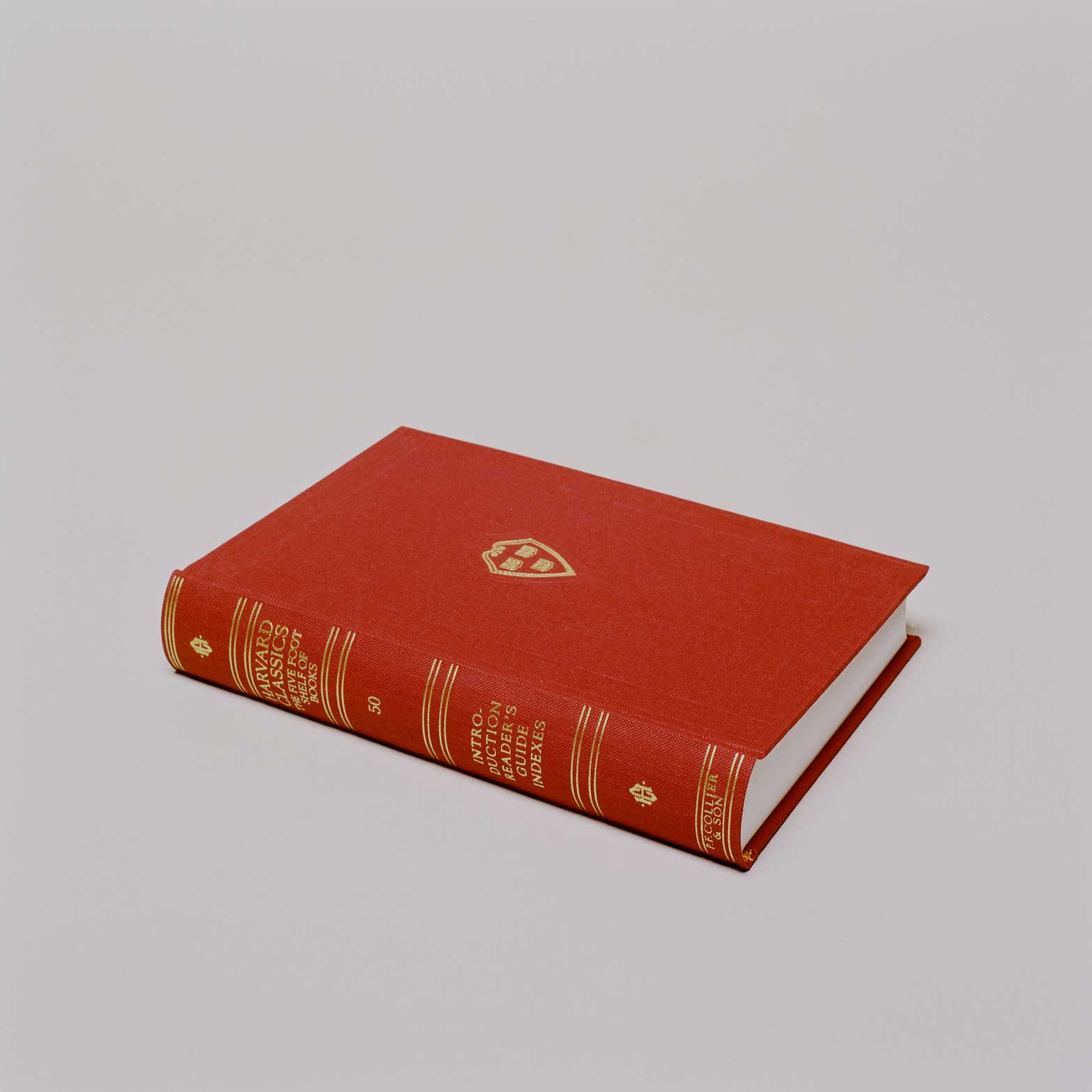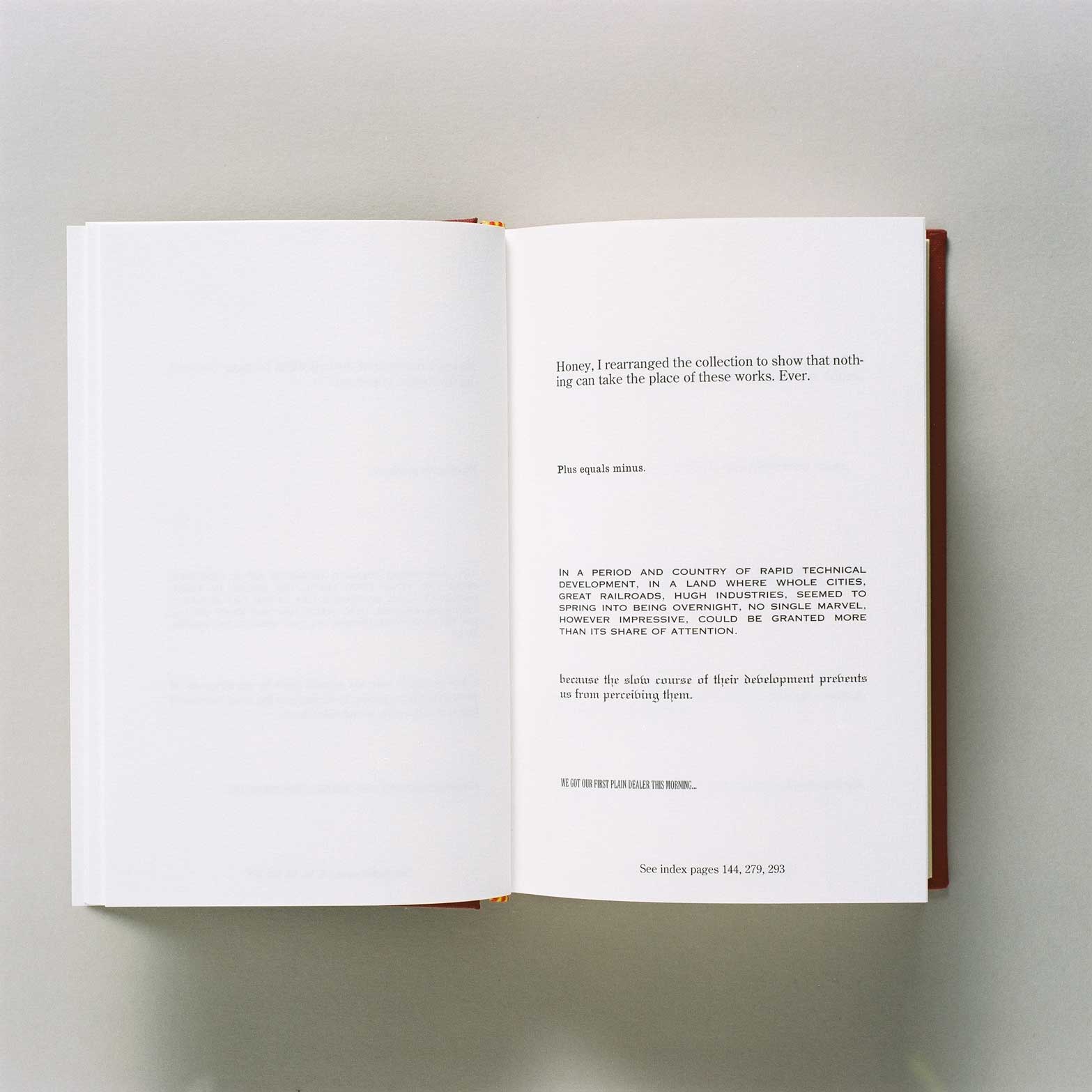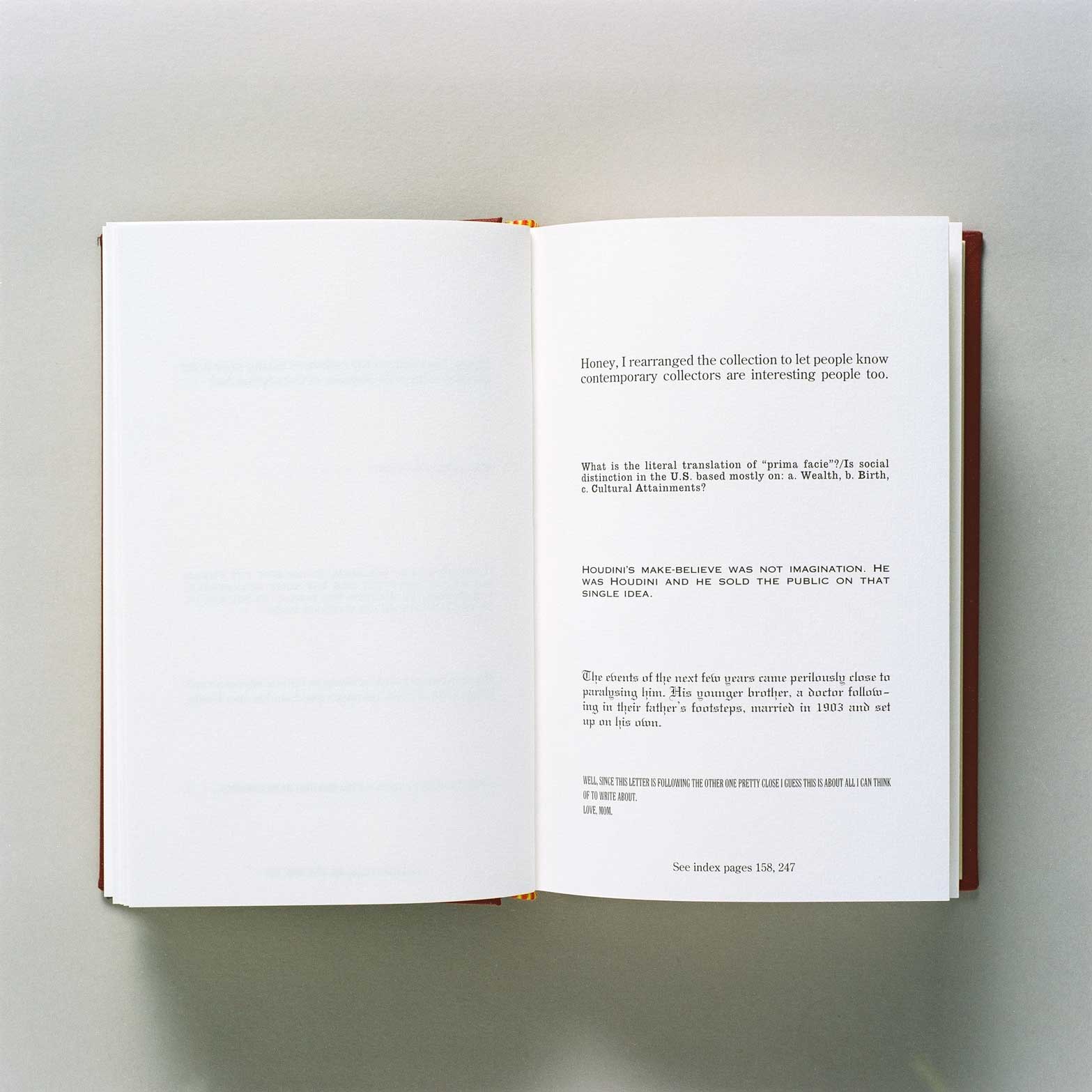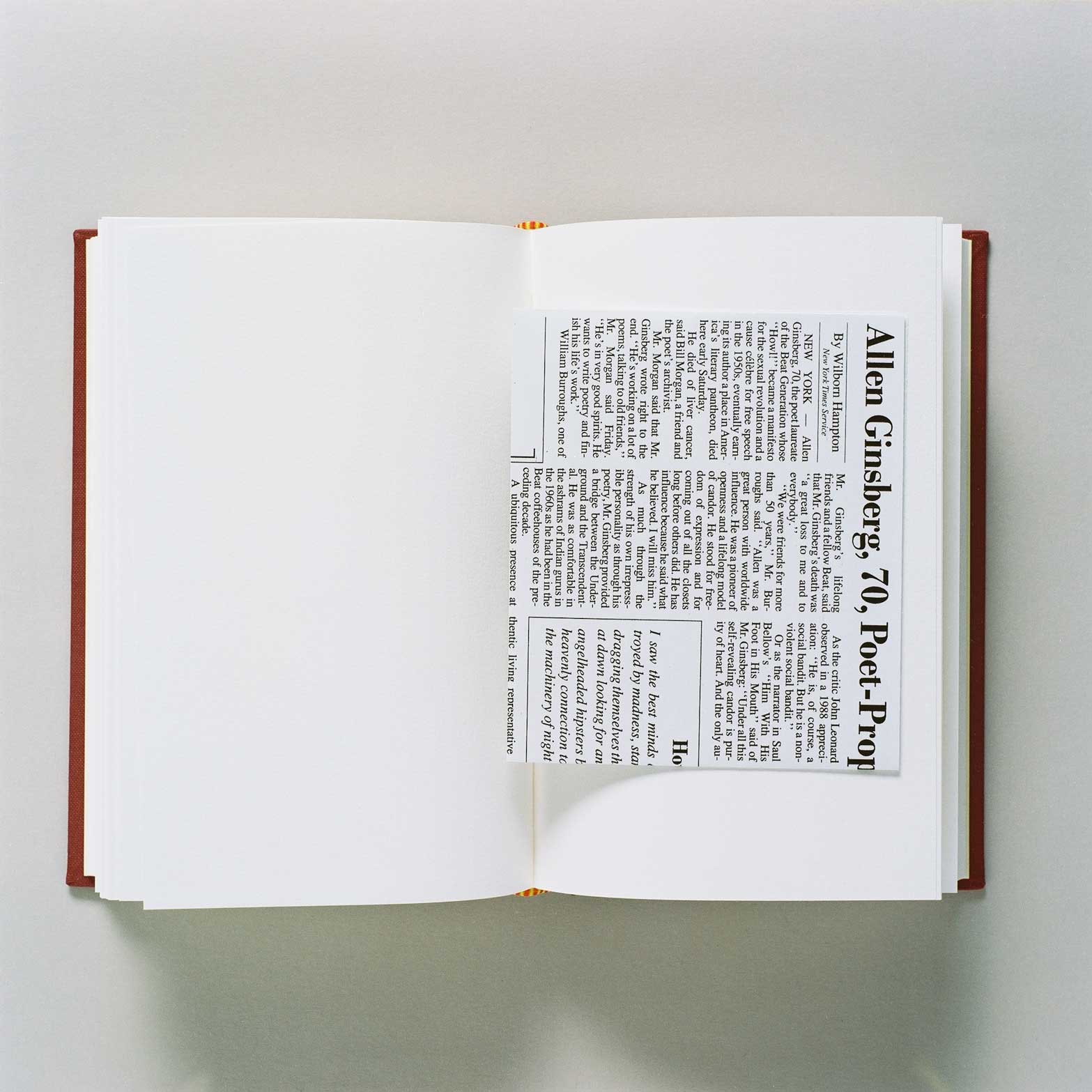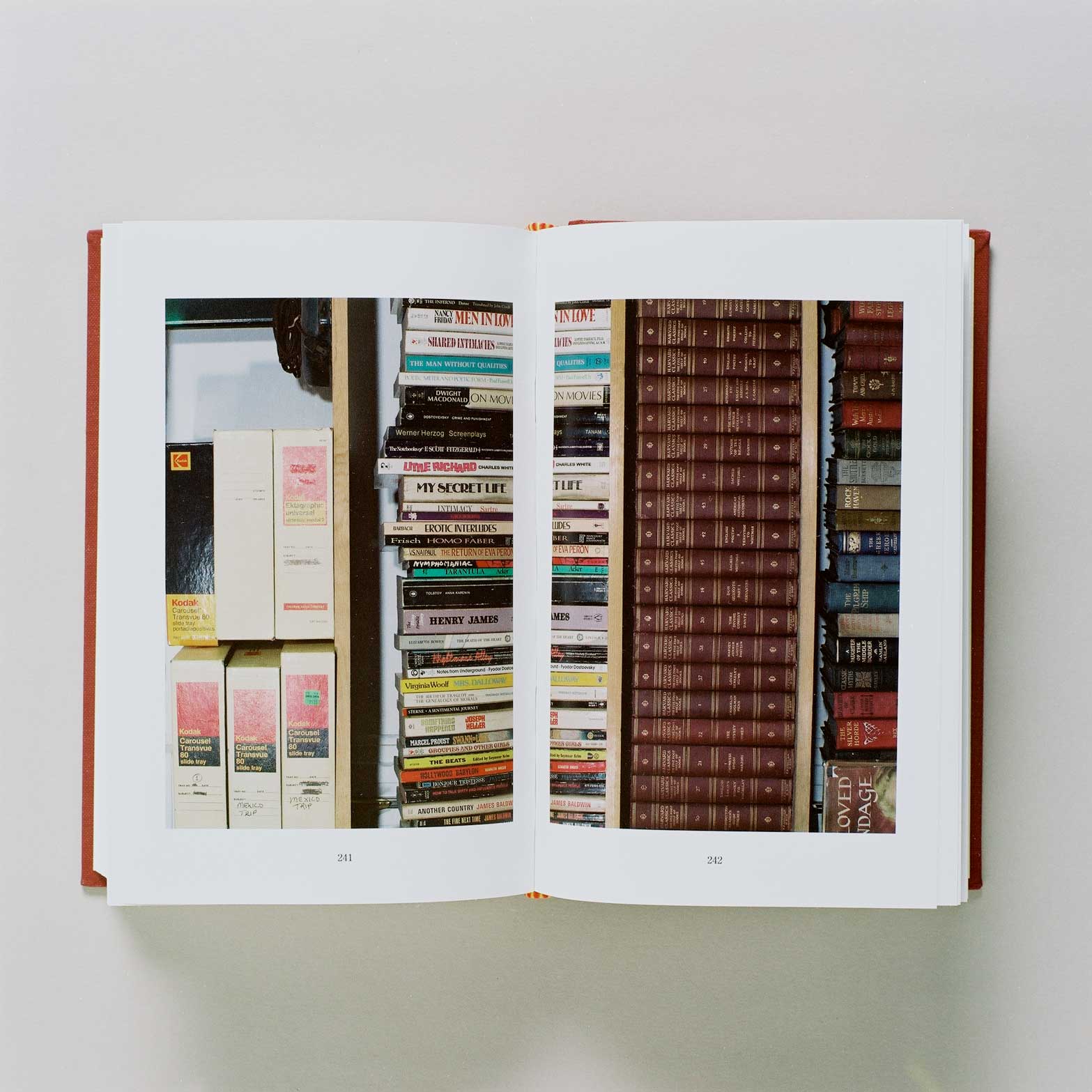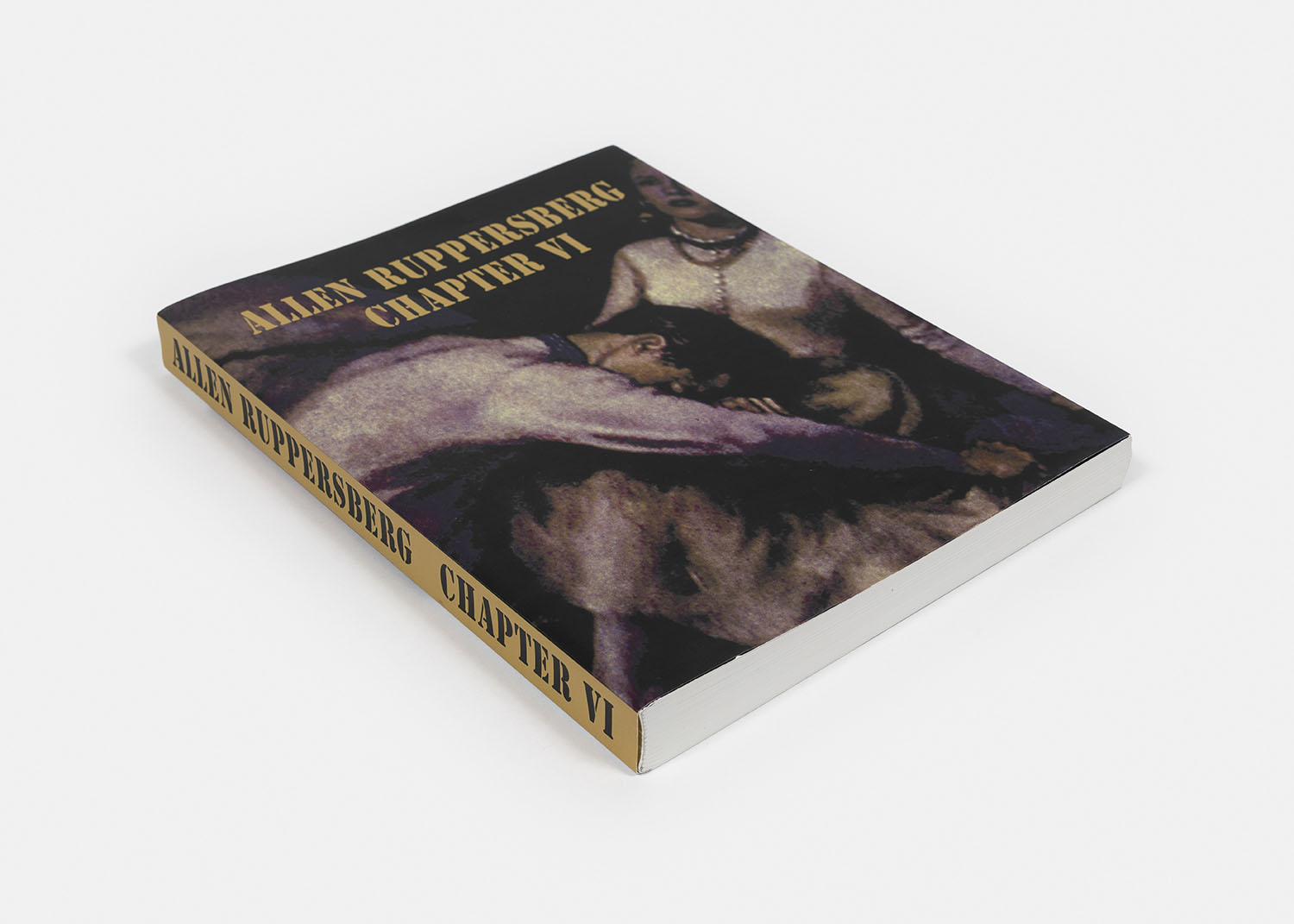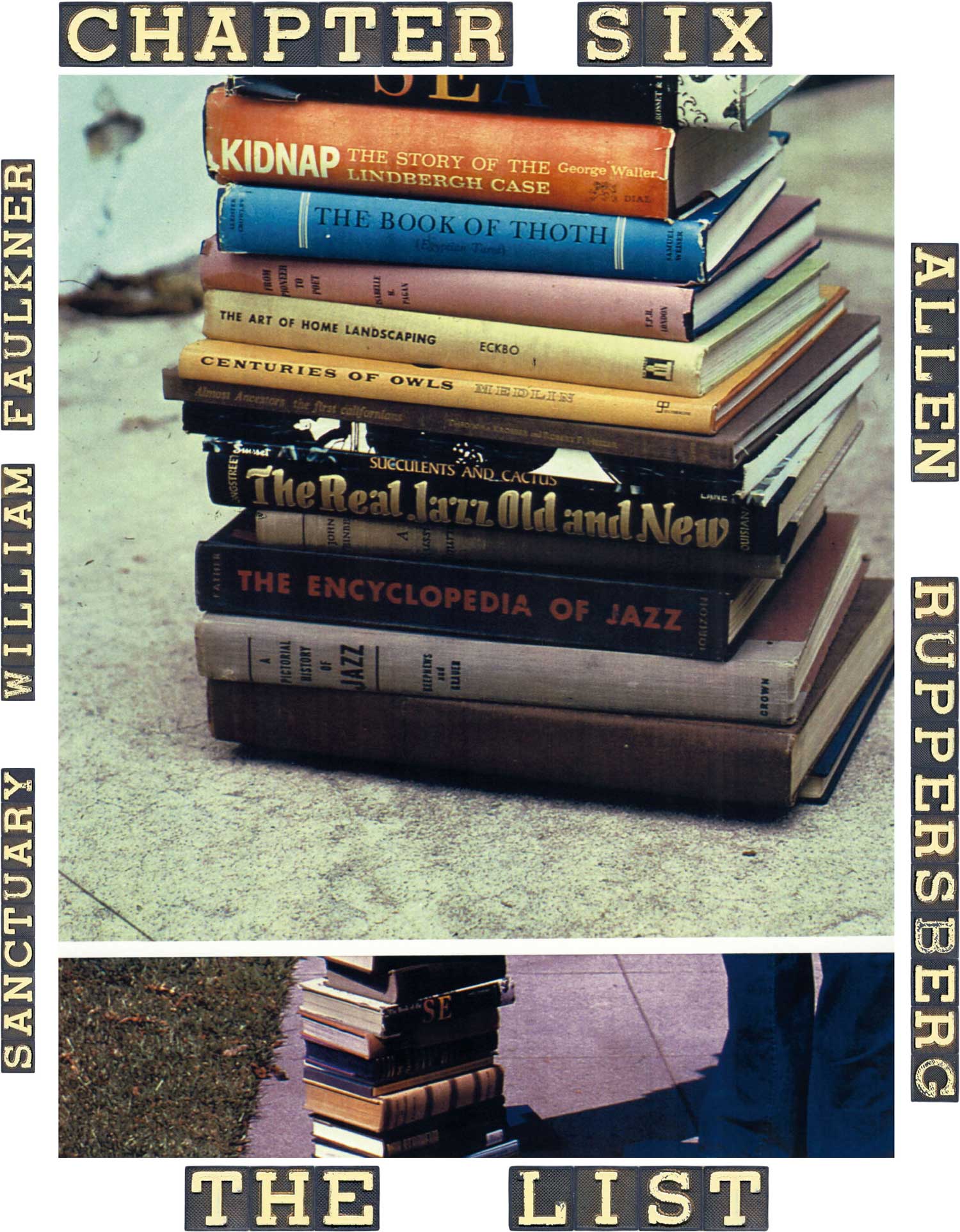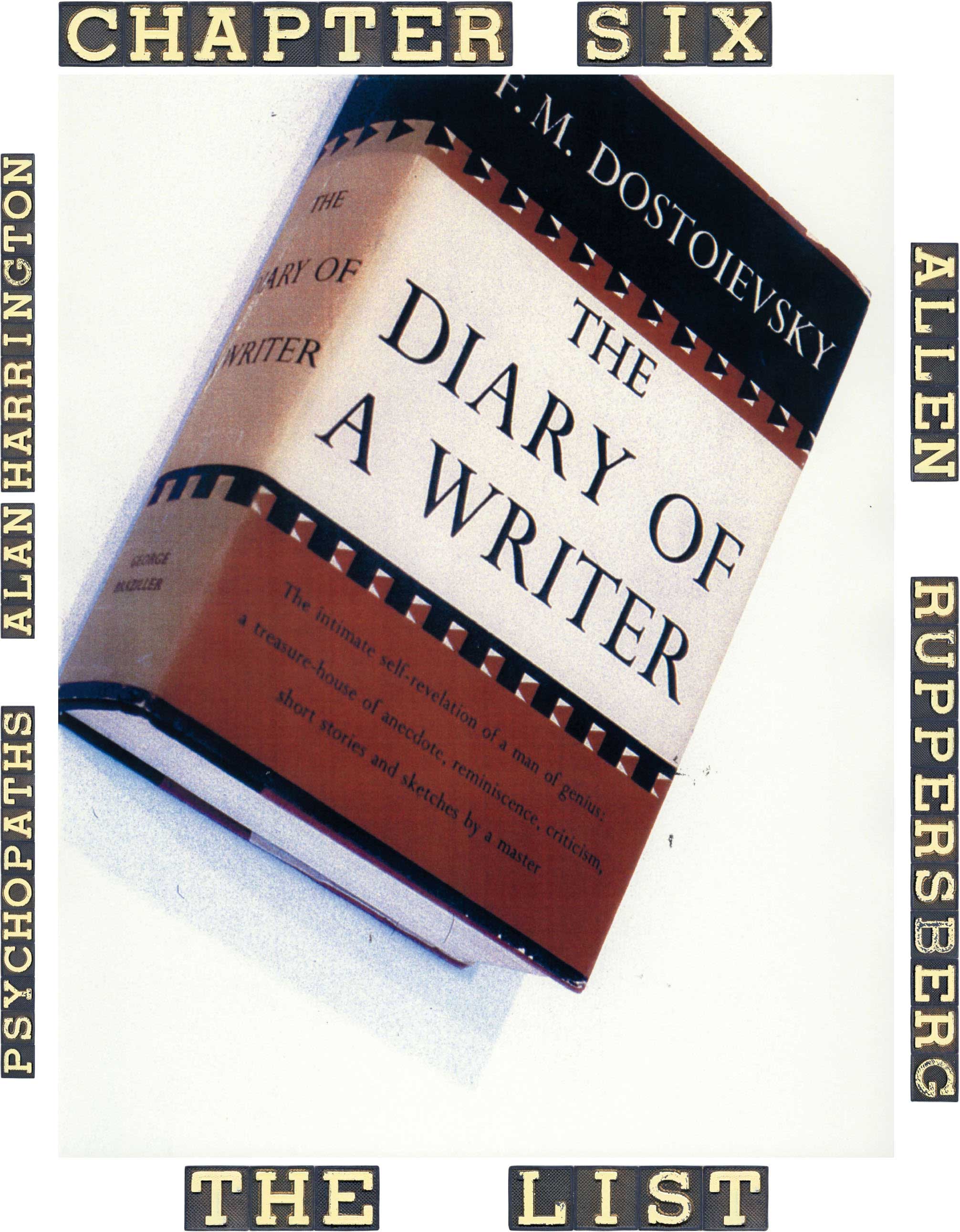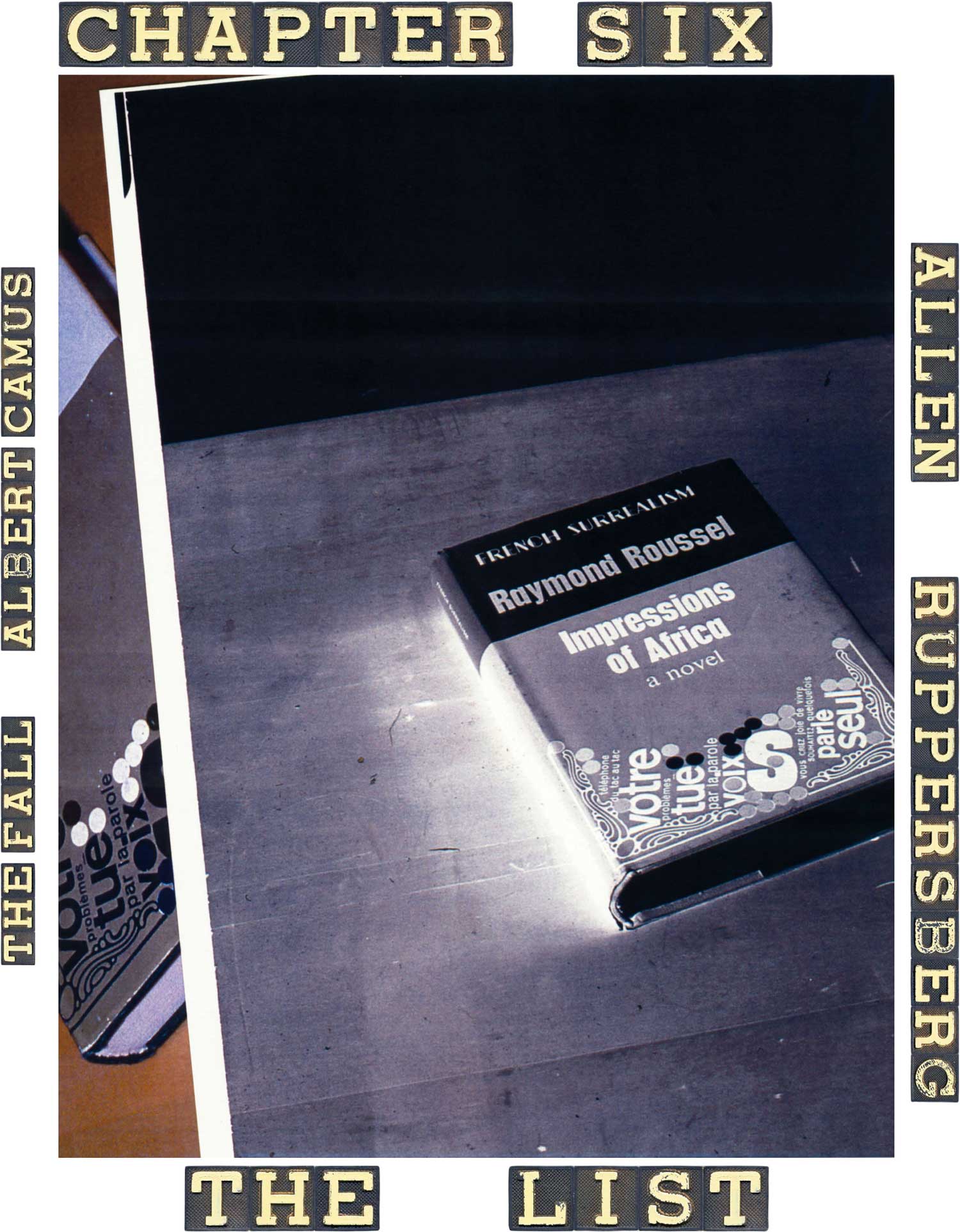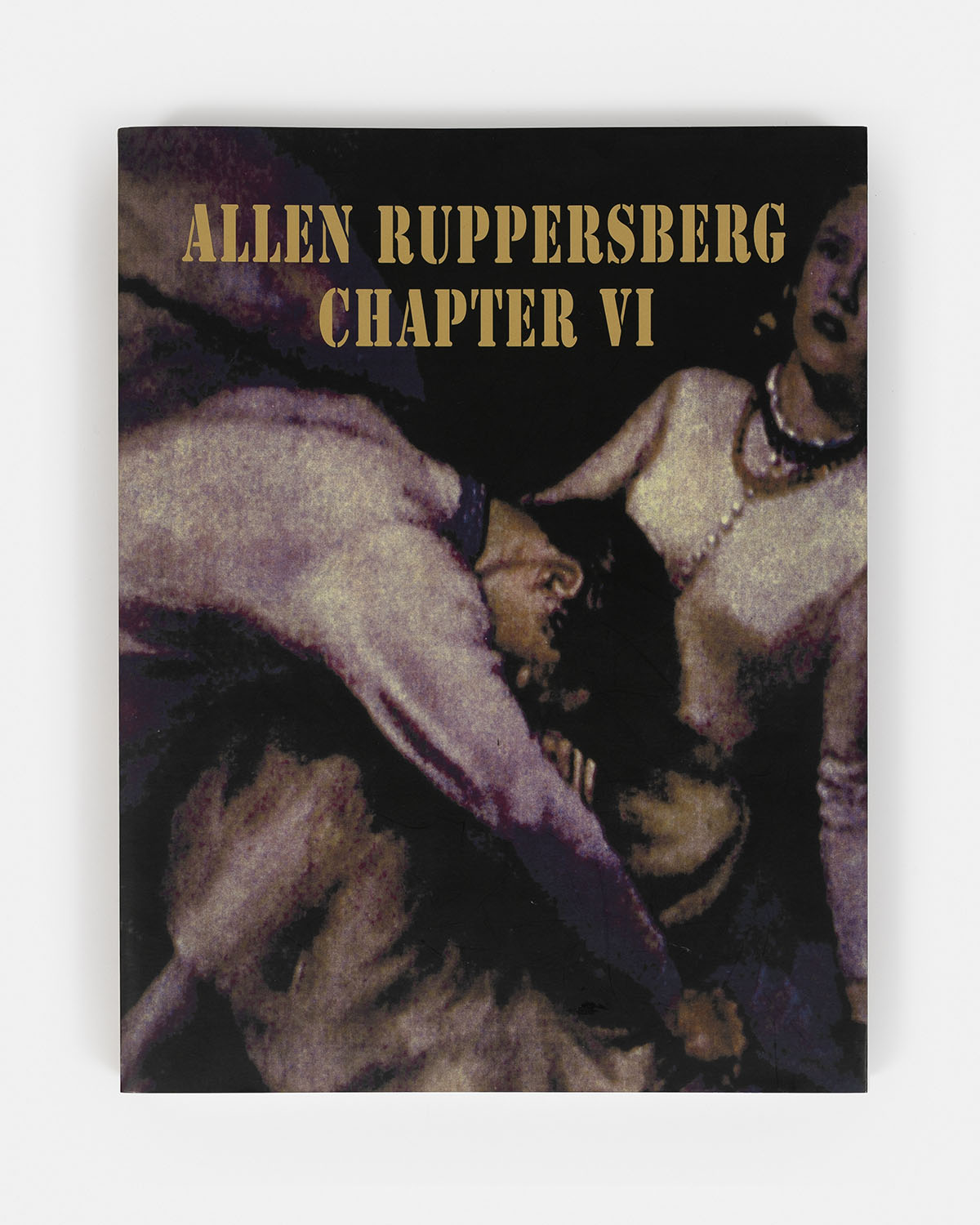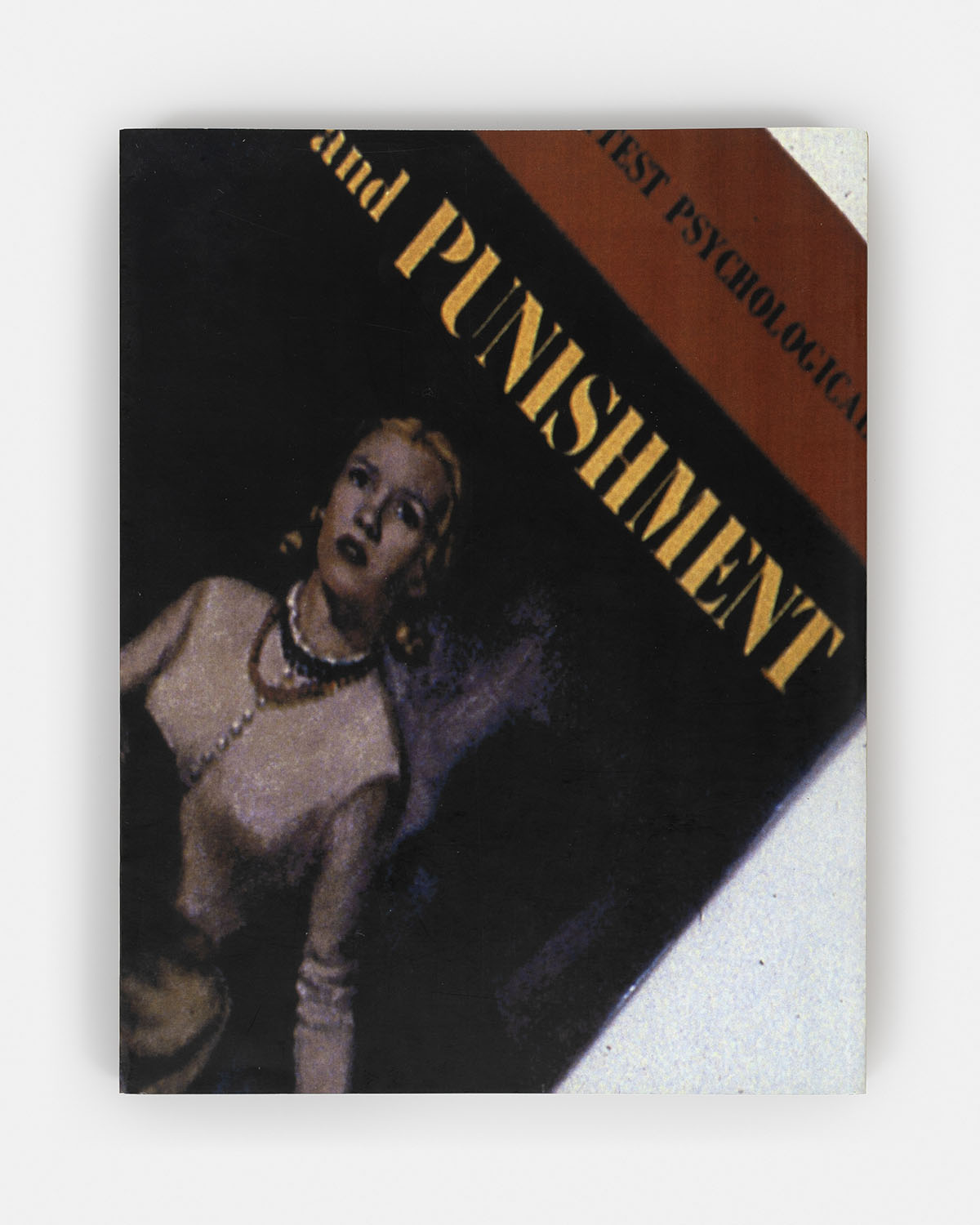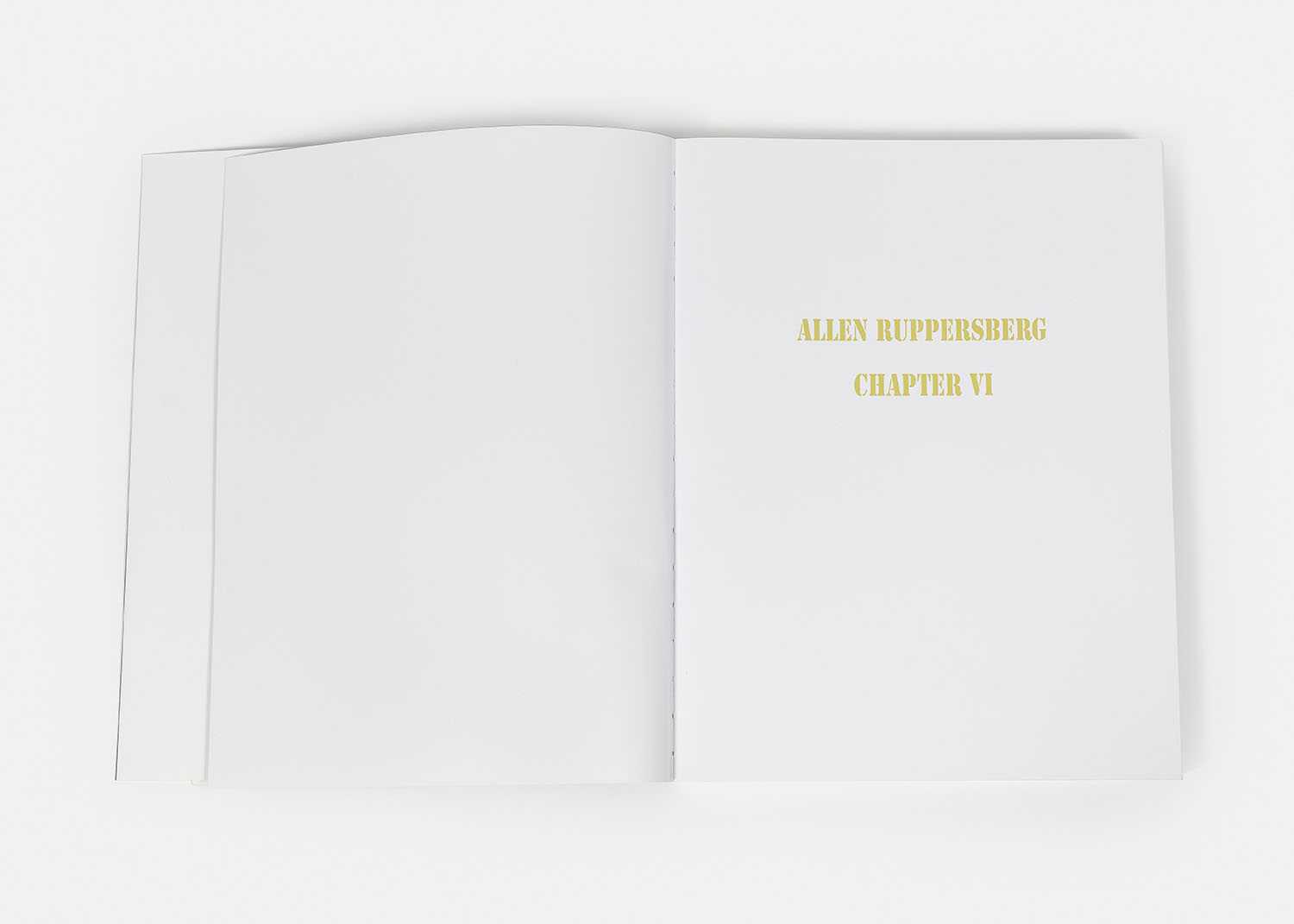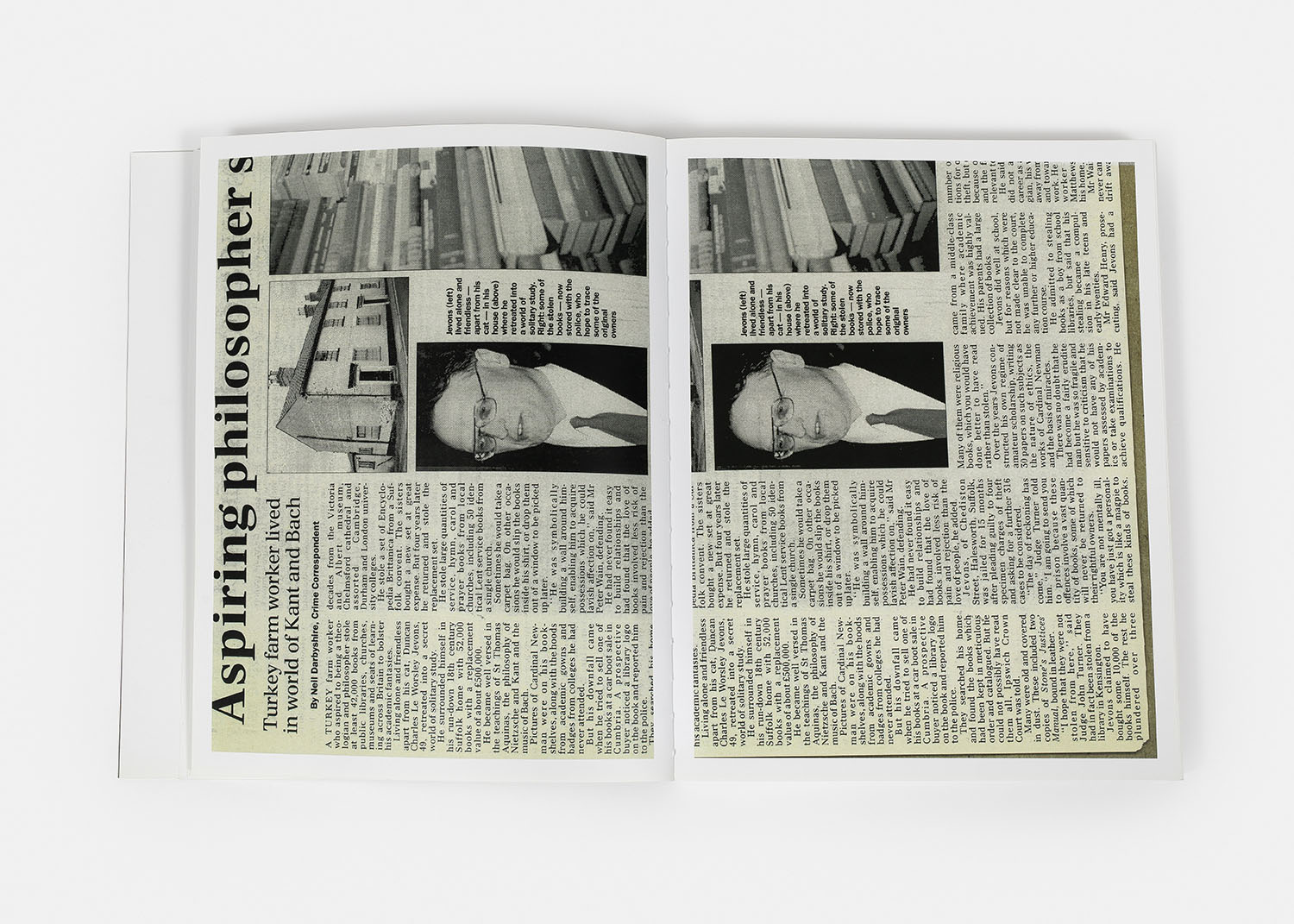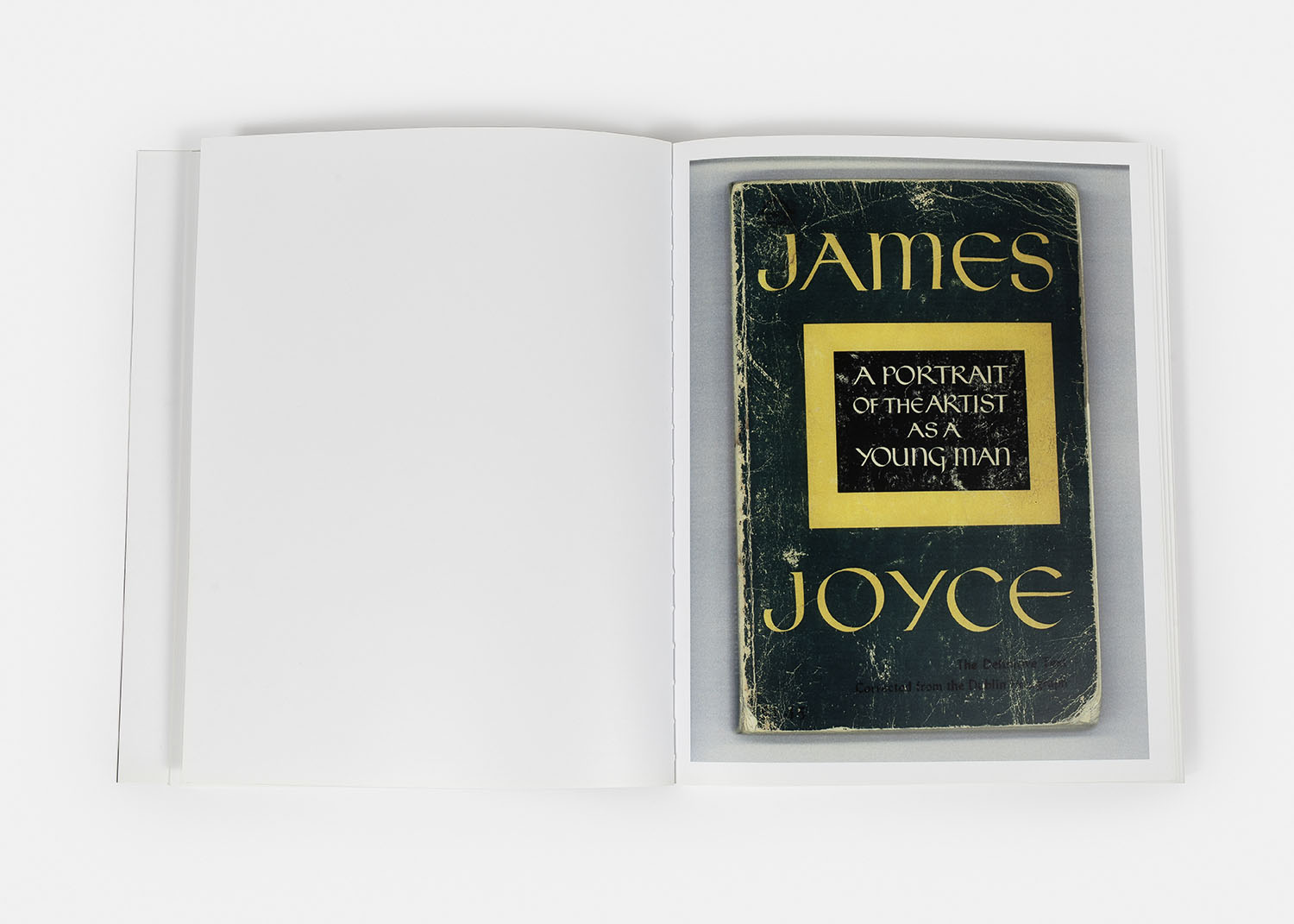Allen Ruppersberg - The Mystery of Nabokov... - Exhibitionmfc-michèle didier | Paris - Brussels - PARIS
Exhibition from March 13 to July 18, 2020
Opening on March 12, 2020 from 6pm to 9pm
«It is not the parts that matter, it is their combinations1»
Born in 1944, Allen Ruppersberg belongs to the first generation of conceptual artists and participated in 1969 to the exhibition When Attitudes Become Form.
His work often uses severals references, from pop culture to mass communication or from literature as language. It can appear autobiographic or self-reflexive, but does not use any specific medium, though text and image are prominent. The work procedes by "collages" and it humorously sets up plots that coud be be described as "decor", and setting up crossed references, both formal or symbolic.
Ruppersberg's uses a fragmentary method that could in a sense be compared to apophenia, defined as an altered perception of the subject. It is a tendency to perceive connections and meaning between things that are not obviously related. "Perception goes beyond the rationality of the individual"2, in a form of thinking close to pareidolia.
The spectator is invited to speculate and to formulate hypotheses, as in the practice of magic and illusionism. The work look to be elucidable and the artist gives us clues but also creates red herring and missing pieces. The work is a game, and the visitor has to figure out of it a internal logic, even if the work includes hazard and randomless that abort any total achievement.
The Mystery of Nabokov... brings together a group of three works by Allen Ruppersberg, which are related to his studio that is both a work and a matrix. It is an archive, an accumulation of books, films, posters, photographs, records, various objects and curiosities that the artist has collected over many years. He has arranged them without any order or pre-established layout, but with the same attention paid to build up his works, covering the walls from floor to ceiling. The New Five Foot Shelf is an installation composed of 50 volumes and 44 posters reproducing a 360-degree, 1:1 scale image of his former studio located at 611 Broadway, in New York, which the artist occupied for fifteen years, mapped and recorded in 1998 and definitively left in December 2000.
As the studio has now been destroyed, the work represents the testimony of his studio, which was a kind of "Merzbau": a work that is "autonomous and developmental, a living organism manifest of a complex web of formal and informal association3".
The 50 volumes presented the with 44 posters, is a fac simile of an anthology published in 1910, Dr. Eliot, a Harvard professor, which was intended to gather together all of the modern and classical literary knowledge that a cultivated American citizen was expected to master. The anthology contained fifty volumes and held on a five foot long shelf, thus its name The Five Foot Shelf of Books. A copy of this anthology could be found in Allen Ruppersberg's studio.
The content of the anthology has been entirely substituted with a text written by Allen Ruppersberg.
The New Five Foot Shelf was subtitled Memoir/Novel/Index. The content of the 50 volumes is, as the artist says, "a reorganisation of multiple elements: a collection of notes, letters, quotations, photos, words, ideas, stories, poems. It is, in short, a personal reference library".
Between the first and the last volume, there are five different chapters: The first chapter: Honey, I rearranged the collection contains several hundred proposals from the artist on how to reorganise a collection. The second chapter: When In Doubt Go to The Movies contains the artist's notes and describes several of his works including Remainders and Where is Al 1. The third chapter: Once Upon A Time When Books Were Famous (works) is a long description of people like the illusionist Harry Houdini, and Pierre-François Palloy, an 18th century French businessman who became rich by selling off the Bastille stone by stone during the Revolution. The fourth chapter: The Three Marcels is a juxtaposition of the biographies of Marcel Proust, Marcel Duchamp and Marcel Broothaers. The fifth chapter: The Master of The Familiar (private) contains the artist's correspondence with his mother, his family history and some literal transcriptions of obituaries.
This text, which unfolds throughout the 48 volumes, can be read at once, sentence by sentence, page by page, volume by volume, horizontally or vertically. It's also a form of
concrete poetry created from thousands of pages, shuffled like playing cards, which invites us to establish new rules of the game, new rules for reading. There are four printed signatures of eight pages per volume. The remaining pages are left blank. A selection of obituaries, from Allen Ruppersberg's private collection, is inserted haphazardly throughout the empty space.
The second work in the exhibition is a jigsaw puzzle, made by Ruppersberg in 1999. Its title is written in two parts, like the two parts of a story, and with two different fonts, A Mystery Of Nobokov's Room and No, Sir, My Library Is Not Yours... On the box's lid, each of the titles seems to refer to one of the two images below, as a guide for the "player" to reproduce each side of this puzzle.
The first image is the reproduction of a room, of which only the bed is visible, with its bedding matching the wallpaper. The second image reproduces a library. However the experience of the player is disrupted or complicated by the artist, who established a protocol during the production of the work:
The artist bought puzzle boxes of different sizes on a flea market. On each of these boxes lids, he adds a title and two images. He made a double-sided jigsaw puzzle, using shapes that are not the most common with a variation increasing the difficulty of the game. The artist placed each puzzle in a different box and randomly removed some pieces from each boxes...
Finally the exhibition presents Chapter VI.
In 2007, Allen Ruppersberg was invited by Moritz Kung to present his ideal book collection as part of a curatorial programme entitled Curating the Library at DeSingel in Antwerp. In 2009, he created a new visual inventory in the form of a limited edition entitled Chapter VI, consisting of a book and a unique poster for each copy. Each page of the book becomes a poster, randomly associated with one of the titles in the index, typed with learning cubes ABC Woodblock Playskool...
The book concluded with the complete text of Franz Kafka's The Burrow. It is a story by Franz Kafka written in Berlin at the end of 1923, six months before the writer's death. This unfinished text deals with the desperate attempt of a narrator who is half animal and half human to build himself a perfect home that would keep him safe from his invisible enemies.
"I've set up my burrow, and the result seems to be a success. From the outside, you can only see a big hole, but in reality it leads nowhere, you just have to take a few steps and you come up against some good hard rock. I don't want to brag that I knowingly devised this ploy, it's just the remnant of one of my many aborted construction attempts, but it finally seemed advantageous to me not to fill this hole."
1. Vladimir Nabokov, The Real Life of Sebastian Knight, Penguin Modern Classics, London, p 176
2. Joachim Soulières, Les coïncidences, Dervy, Paris, 2012
3. Elizabeth Burns Gamard, Kurt Schwitters' Merzbau (the cathedral of erotic misery), Princeton Architectural Press, 2000, p 21
4. Franz Kafka, Le Terrier, 1923
Exhibition from March 13 to July 18, 2020
Opening on March 12, 2020 from 6pm to 9pm
«It is not the parts that matter, it is their combinations1»
Born in 1944, Allen Ruppersberg belongs to the first generation of conceptual artists and participated in 1969 to the exhibition When Attitudes Become Form.
His work often uses severals references, from pop culture to mass communication or from literature as language. It can appear autobiographic or self-reflexive, but does not use any specific medium, though text and image are prominent. The work procedes by "collages" and it humorously sets up plots that coud be be described as "decor", and setting up crossed references, both formal or symbolic.
Ruppersberg's uses a fragmentary method that could in a sense be compared to apophenia, defined as an altered perception of the subject. It is a tendency to perceive connections and meaning between things that are not obviously related. "Perception goes beyond the rationality of the individual"2, in a form of thinking close to pareidolia.
The spectator is invited to speculate and to formulate hypotheses, as in the practice of magic and illusionism. The work look to be elucidable and the artist gives us clues but also creates red herring and missing pieces. The work is a game, and the visitor has to figure out of it a internal logic, even if the work includes hazard and randomless that abort any total achievement.
The Mystery of Nabokov... brings together a group of three works by Allen Ruppersberg, which are related to his studio that is both a work and a matrix. It is an archive, an accumulation of books, films, posters, photographs, records, various objects and curiosities that the artist has collected over many years. He has arranged them without any order or pre-established layout, but with the same attention paid to build up his works, covering the walls from floor to ceiling. The New Five Foot Shelf is an installation composed of 50 volumes and 44 posters reproducing a 360-degree, 1:1 scale image of his former studio located at 611 Broadway, in New York, which the artist occupied for fifteen years, mapped and recorded in 1998 and definitively left in December 2000.
As the studio has now been destroyed, the work represents the testimony of his studio, which was a kind of "Merzbau": a work that is "autonomous and developmental, a living organism manifest of a complex web of formal and informal association3".
The 50 volumes presented the with 44 posters, is a fac simile of an anthology published in 1910, Dr. Eliot, a Harvard professor, which was intended to gather together all of the modern and classical literary knowledge that a cultivated American citizen was expected to master. The anthology contained fifty volumes and held on a five foot long shelf, thus its name The Five Foot Shelf of Books. A copy of this anthology could be found in Allen Ruppersberg's studio.
The content of the anthology has been entirely substituted with a text written by Allen Ruppersberg.
The New Five Foot Shelf was subtitled Memoir/Novel/Index. The content of the 50 volumes is, as the artist says, "a reorganisation of multiple elements: a collection of notes, letters, quotations, photos, words, ideas, stories, poems. It is, in short, a personal reference library".
Between the first and the last volume, there are five different chapters: The first chapter: Honey, I rearranged the collection contains several hundred proposals from the artist on how to reorganise a collection. The second chapter: When In Doubt Go to The Movies contains the artist's notes and describes several of his works including Remainders and Where is Al 1. The third chapter: Once Upon A Time When Books Were Famous (works) is a long description of people like the illusionist Harry Houdini, and Pierre-François Palloy, an 18th century French businessman who became rich by selling off the Bastille stone by stone during the Revolution. The fourth chapter: The Three Marcels is a juxtaposition of the biographies of Marcel Proust, Marcel Duchamp and Marcel Broothaers. The fifth chapter: The Master of The Familiar (private) contains the artist's correspondence with his mother, his family history and some literal transcriptions of obituaries.
This text, which unfolds throughout the 48 volumes, can be read at once, sentence by sentence, page by page, volume by volume, horizontally or vertically. It's also a form of
concrete poetry created from thousands of pages, shuffled like playing cards, which invites us to establish new rules of the game, new rules for reading. There are four printed signatures of eight pages per volume. The remaining pages are left blank. A selection of obituaries, from Allen Ruppersberg's private collection, is inserted haphazardly throughout the empty space.
The second work in the exhibition is a jigsaw puzzle, made by Ruppersberg in 1999. Its title is written in two parts, like the two parts of a story, and with two different fonts, A Mystery Of Nobokov's Room and No, Sir, My Library Is Not Yours... On the box's lid, each of the titles seems to refer to one of the two images below, as a guide for the "player" to reproduce each side of this puzzle.
The first image is the reproduction of a room, of which only the bed is visible, with its bedding matching the wallpaper. The second image reproduces a library. However the experience of the player is disrupted or complicated by the artist, who established a protocol during the production of the work:
The artist bought puzzle boxes of different sizes on a flea market. On each of these boxes lids, he adds a title and two images. He made a double-sided jigsaw puzzle, using shapes that are not the most common with a variation increasing the difficulty of the game. The artist placed each puzzle in a different box and randomly removed some pieces from each boxes...
Finally the exhibition presents Chapter VI.
In 2007, Allen Ruppersberg was invited by Moritz Kung to present his ideal book collection as part of a curatorial programme entitled Curating the Library at DeSingel in Antwerp. In 2009, he created a new visual inventory in the form of a limited edition entitled Chapter VI, consisting of a book and a unique poster for each copy. Each page of the book becomes a poster, randomly associated with one of the titles in the index, typed with learning cubes ABC Woodblock Playskool...
The book concluded with the complete text of Franz Kafka's The Burrow. It is a story by Franz Kafka written in Berlin at the end of 1923, six months before the writer's death. This unfinished text deals with the desperate attempt of a narrator who is half animal and half human to build himself a perfect home that would keep him safe from his invisible enemies.
"I've set up my burrow, and the result seems to be a success. From the outside, you can only see a big hole, but in reality it leads nowhere, you just have to take a few steps and you come up against some good hard rock. I don't want to brag that I knowingly devised this ploy, it's just the remnant of one of my many aborted construction attempts, but it finally seemed advantageous to me not to fill this hole."
1. Vladimir Nabokov, The Real Life of Sebastian Knight, Penguin Modern Classics, London, p 176
2. Joachim Soulières, Les coïncidences, Dervy, Paris, 2012
3. Elizabeth Burns Gamard, Kurt Schwitters' Merzbau (the cathedral of erotic misery), Princeton Architectural Press, 2000, p 21
4. Franz Kafka, Le Terrier, 1923
Exposed artworks
Installation, 50 volumes and 44 posters
Each poster 57.87 x 35.43 in
Artwork constituted by a unique poster and a book, 240 pages
Poster : 35.83 x 28.74 in, book : 10.63 x 8.27 in
